






LOOK SEE STUDY CONSIDER

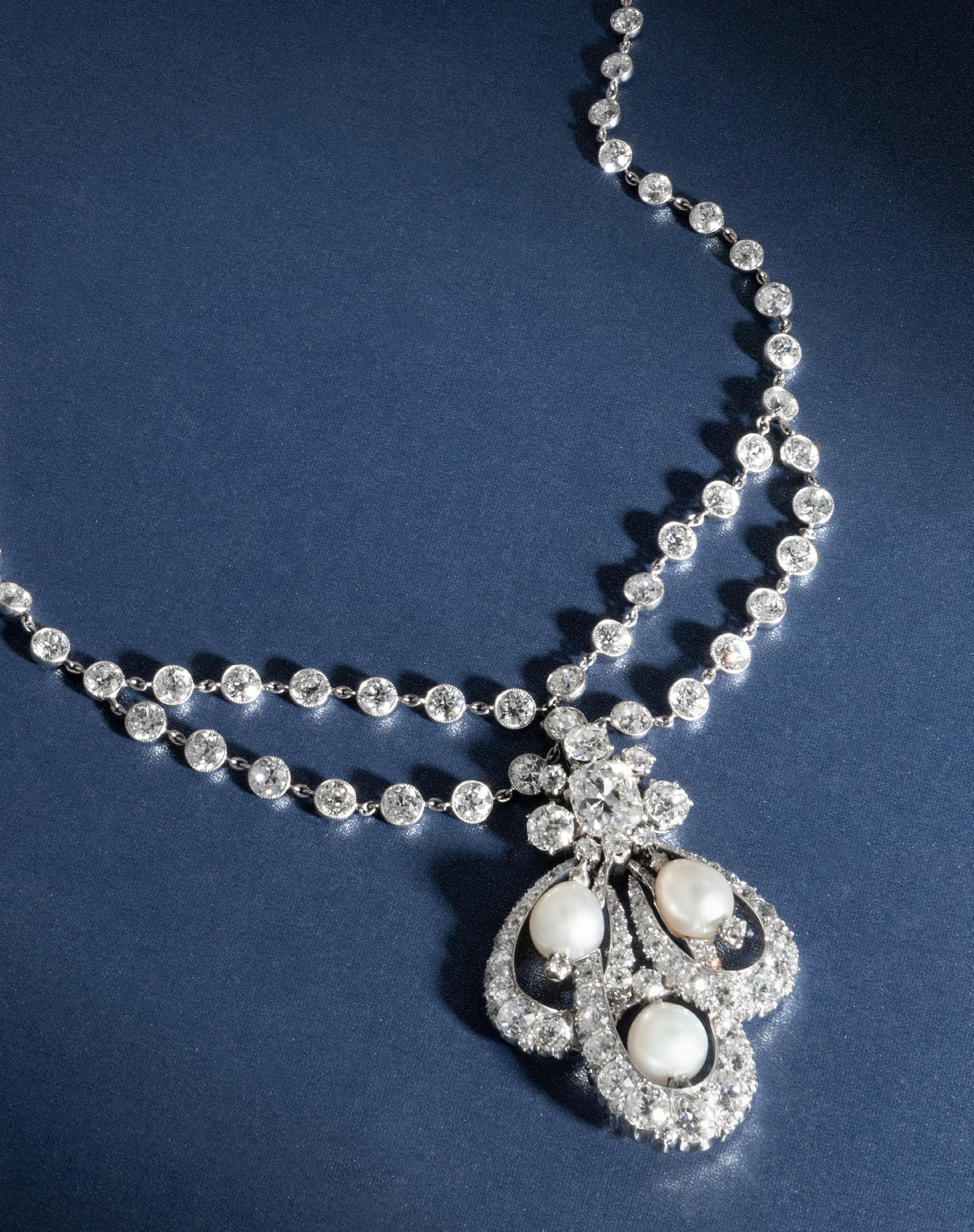
WORDS
Pauline Archambault, Dianne Batista, Lynda Cain, Leslie Calero, Courtney Chapel, Raphaël Chatroux, Jacob Coley, Nick Coombs, Nick Curnow, Sarah Duncan, Ben Farina, Danica Farnand, Ben Fisher, Simon Hucker, Christina Kiriakos, Xuanyu Li, Tim Prince, Gemma Sudlow, Ruth Thuston, Kristin Vaughn, Zack Wirsum, Annie Wu
DESIGN
Jennifer Castle
PHOTOGRAPHY
Zoë Bare, Violet Christian, Carmen Colome, Adam Donnelly, Marisa Fabiilli, Jared Hefel, Richard Hogan, Troy Holleman, Kristen Hudson, David Jackson, Tyler Leiby, Deo Lerma, Roberto Martinez, Libby Moore, Ola Piatkowska, Mike Reinders, Bill Ross, Rachel Smith, Tarji Stewart, Dallas Tolentino
COVER, TO BE OFFERED 10AM CT SEPTEMBER 26, CHICAGO
Pablo Picasso (1881–1973)
Visage au nez noir (A.R. 609) including original wooden crate from Madoura, 1969
$30,000 - 50,000
FRONTISPIECE, TO BE OFFERED SEPTEMBER 26, CHICAGO
Joan Miró (Spanish, 1893-1983)
One Plate from Série Noire et Rouge, 1938.
$30,000 - 50,000
THIS PAGE, TO BE OFFERED SEPTEMBER 12, CHICAGO
Antique, Diamond and Natural Pearl Necklace
$80,000 - 120,000


PHILADELPHIA SOLD FOR $76,200
A carved tobacconist figure of the actor Edwin Forrest (1806-1872) in his role as Metamora from "King of the Wampanoags," circa 1860
Property sold on behalf of the Brandywine Museum of Art to benefit future acquisitions and care of collections
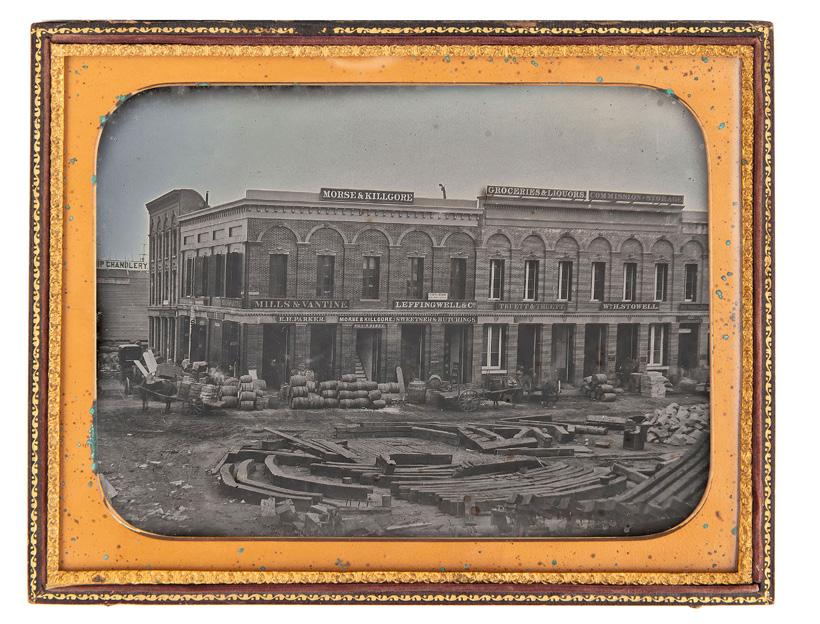
CINCINNATI SOLD FOR $66,675
[CALIFORNIA - EARLY PHOTOGRAPHY].
Whole plate daguerreotype of San Francisco, California. Circa 1852-1853.
PHILADELPHIA SOLD FOR $152,400

CHICAGO SOLD FOR $107,950
Property of a Florida Collector


PHILADELPHIA SOLD FOR $203,200
Tom Wesselmann (American, 1931-2004)
Bedroom Face with Tulip , 1986
The Estate of Jordan and Cynthia Katz, Pennsylvania
CHICAGO SOLD FOR $317,500
Alex Katz (American, b. 1927) Ariel , 2016-17
The Private Collection of Debra and Harry Seigle, Chicago, Illinois


CINCINNATI SOLD FOR $45,000
Custer Range Colt Single Action Army Cavalry Revolver #5973 - A Lot 6 Delivery - Likely Picked Up at The Little Bighorn From the Collection of Dave Dimmick

CHICAGO SOLD FOR $40,640
Patek Philippe, Ref. 5065 Stainless Steel
Jumbo 'Aquanaut' Watch

CHICAGO SOLD FOR $76,200
SANGORSKI, Alberto, calligrapher and illuminator. -- KEATS, John (1795-1821). "La Belle Dame sans Merci" -- "Ode on a Grecian Urn" -- "Ode to Psyche." London, 1928.



SOLD FOR $51,000
A 1984-85 Star Basketball Unopened NBA Team Bags Complete Set Including Chicago Bulls Michael



CHICAGO SOLD FOR $114,300
CHICAGO SOLD FOR $34,925
Judy Garland In the Good Old Summertime Irene Gown Accompanied by A Trio of Studio Images, 1949
CHICAGO SOLD FOR $533,400
Pat Steir (American, b. 1938)
Small Ghost Waterfall , 1993 Property from the Estate of Renee and Sandy Bank

CHICAGO SOLD FOR $95,250
Roy Lichtenstein (American, 1923–1997) Reflections on Soda Fountain , 1991
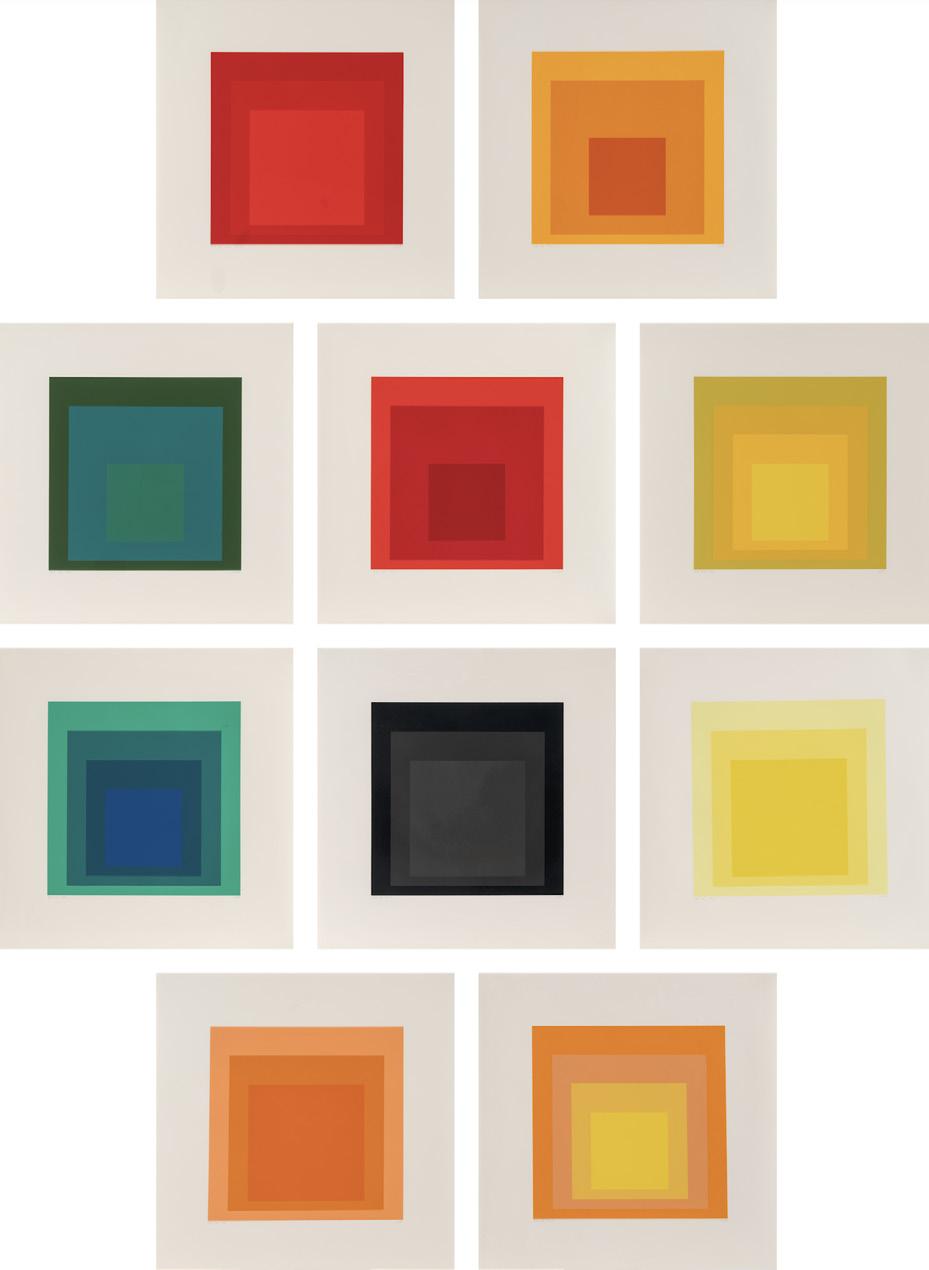
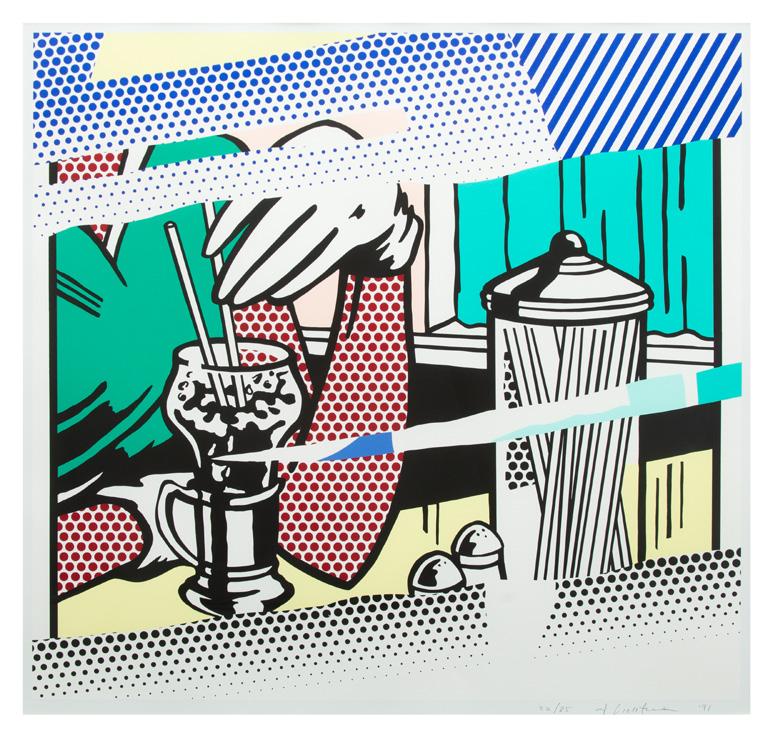
CHICAGO SOLD FOR $146,050
Josef Albers (American/German, 1888-1976) Homage to the Square: Edition Keller Ia-Ik (complete portfolio of ten screenprints, with text and portfolio case), 1970 Property from an Estate, Highland Park, Illinois
BEACH SOLD FOR $520,700
A Pair of Limoges Enameled Copper Plaques Attributed to Leonard Limousin Property from the Estate of Norma K. Hunt, Dallas, Texas

SOLD FOR $4,763

SOLD FOR $10,795
SOLD FOR $8,890



SOLD FOR $24,130
Bulgari, White Gold and Diamond 'Fireworks' Choker Necklace
Freeman’s | Hindman sold a portion of The Private Collection of Secretary Madeleine K. Albright on May 7 and 8, reaching more than quadruple its pre-sale estimate. All lots in the live and online sales found a buyer, with pieces fetching as much as 20 times their pre-sale estimates. The sale featured a diverse set of items ranging from designer pieces to costume jewelry and small keepsakes. More than 1,000 bidders registered for the sales and over 37% were first-time clients to Freeman’s | Hindman.
Secretary Albright’s love of jewelry was legendary. To Secretary Albright, jewelry could be so much more than a fashion statement—it could be a subtle, or sometimes not so subtle, form of diplomacy. She famously referred to her extensive brooch collection as her “personal diplomatic arsenal.” It was no surprise, then, that Secretary Albright’s jewelry attracted great interest. This included the collection’s top lot, a Bulgari white gold and diamond ‘Fireworks’ choker necklace that doubled its estimate to realize $24,130. As expected, Secretary Albright’s renowned pin collection was the true highlight of the sale as bidders were eager to bring home a small part of her illustrious career.
Of the diplomatic and political memorabilia included in the auction and prominently displayed in her office, a set of painted nesting dolls of Soviet political leaders drew significant attention, easily surpassing its $100-200 estimate to sell for $5,398. These animated nesting dolls serve as a reminder of Madeleine Albright’s profound ties to Eastern Europe, as she reflected, “Although I had become an American, I couldn’t separate myself from the struggles in Europe…the Cold War struggle was very real to me, and I followed events closely.”
SOLD FOR $5,398
A Set of Painted Nesting Dolls of Soviet Political Leaders

On June 6 in Chicago, Freeman’s | Hindman presented Fine Literature from the Collection of Richard C. McKenzie , which was met with tremendous enthusiasm from the market. Bidders vied for first editions and literary high spots of the 19th and 20th centuries with all 297 lots selling, of which nearly 60% sold for prices surpassing the pre-sale estimate. The collection drew international bidders, 30% of whom were bidding with Freeman’s | Hindman for the very first time.
The collection included fine copies of high spots of American and English literature from the last two centuries featuring works by Jane Austen (17751817), Emily Dickinson (1830-1886), William Faulkner (1897-1962), F. Scott Fitzgerald (1896-1944), and Herman Melville (1819-1891) headlining the sale.
SOLD FOR $16,510
FITZGERALD, Francis Scott. The Beautiful and the Damned . FIRST EDITION, FIRST PRINTING, American Issue.

SOLD FOR $22,860
DICKINSON, Emily (1830-1886). Poems. -- Poems Second Series. -- Poems Third Series . Boston: Robert Brothers, 1890, 1891, 1896.


SOLD FOR $39,370
Aline Elwes McDonnell’s lineage is traceable back as far as King George II of England and to Copped Hall in Essex, a site near the town of Epping that dates back to medieval times— originally home to the FitzAucher family who held the office of Foresters. Ms. McDonnell’s unassuming Connecticut home featured a glorious recreation of an 18th century English country house drawing room. Property from this stunning home was presented at auction by Freeman’s | Hindman in June to great success, achieving a 180% sell-through rate by value. The auction included historic pieces such as a finely woven Brussel’s tapestry circa 1680 (sold for $15,240), Regency period cockpen faux-bamboo armchairs (sold for $39,370), and a Chinese Famille Rose Decorated ‘Cong’ Vase (sold for $158,750), all bound together by an illustrious group of 18th century portraits.


SOLD FOR $12,065
Attributed to Matthew William Peters (British, 1723-1792)
Portrait of a Lady, Possibly Catherine Maria 'Kitty' Fischer (c. 1741-1767)
1807 engraving
Presented across three single-owner sales, aptly named “acts,” the River House collection of Laura Pels captivated a diverse range of collectors. The collection spanned fine art, furniture, decorative arts, couture, and luxury handbags, and was offered both in our Upper East Side saleroom and online. A dedicated philanthropist and supporter of nonprofit theater through her eponymous foundation, Laura Pels forged important relationships with playwrights, actors, and creative directors in the United States and abroad.
Act I, which highlighted fine art, was the star of the show. Ms. Pels was a close friend and confidante of artist Françoise Gilot, whose paintings and drawings featured prominently alongside works by contemporaries Jean Cocteau, Joan Miró, Max Ernst, and Georges Braque. The highly anticipated Gilot pieces surpassed expectations, with Birds and Anemones setting a new artist record for a charcoal work on paper. Other significant works, such as Mission Bay (Coastal View) and The Model, also achieved impressive results.
SOLD FOR $133,350
DETAIL
Françoise Gilot (French, 1921-2023)
Mission Bay (Coastal View) , c. 1979-1980
SOLD FOR $53,975
Birds and Anemones , 2008

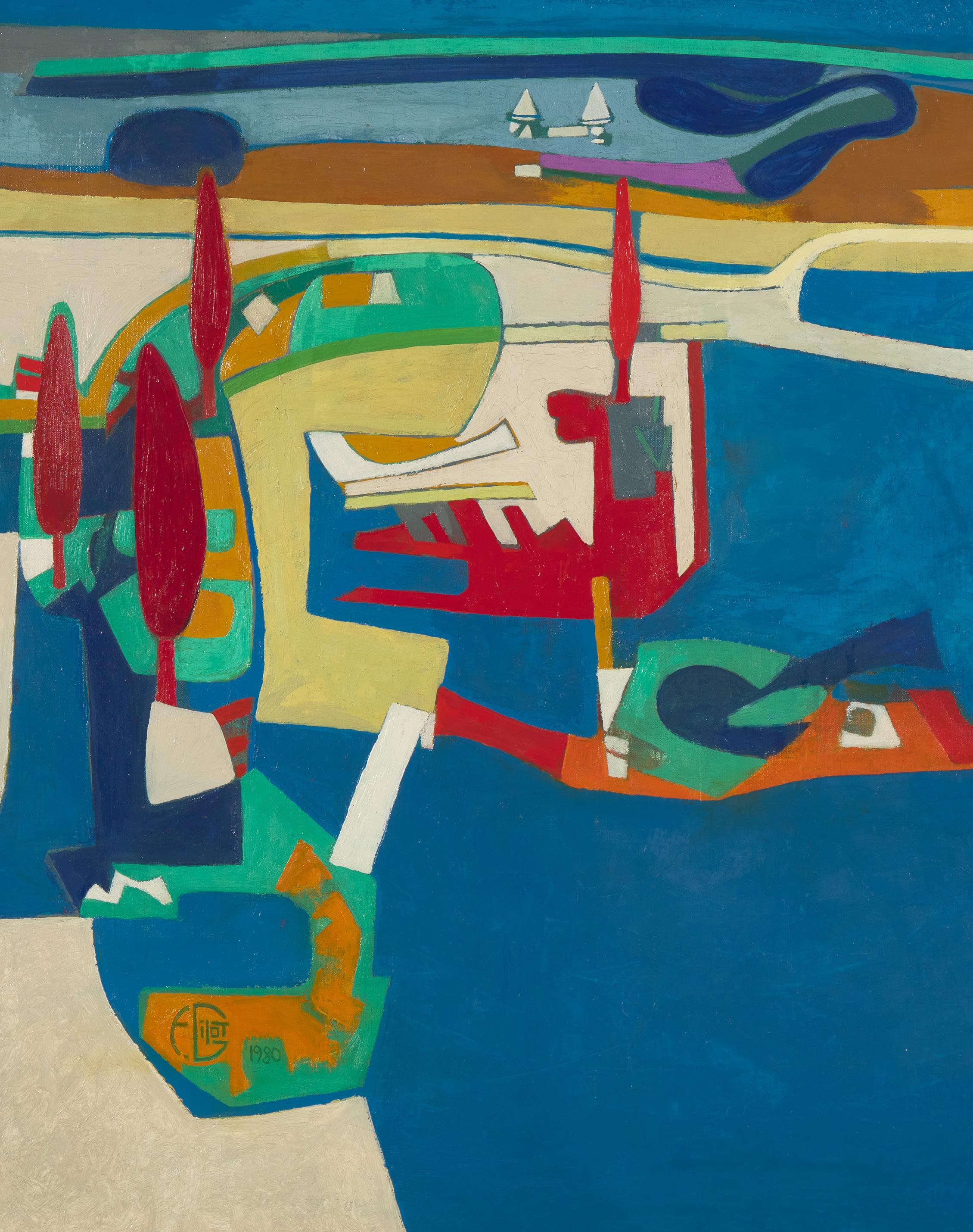
BY LESLIE CALERO, DIRECTOR, TRUSTS, ESTATES AND PRIVATE CLIENTS, NAPLES
Olga de Amaral, a pioneer in textile art and weaving, is known for her unique approach that blends traditional techniques with contemporary aesthetics. Her work stands out for its use of unconventional materials, such as gold leaf and silver threads, which create a luminous effect that interacts dynamically with light. This distinctive method invites viewers to experience a captivating three-dimensional illusion within her flat tapestries, blurring the boundaries between textile and fine art.
Amaral's distinctive method not only showcases her technical prowess but also highlights her ability to merge art with the tactile qualities of textiles. She challenges conventional perceptions of textiles by transforming ordinary fibers into extraordinary visual experiences. Her works often reflect her Colombian heritage, infusing them with a sense of identity and connection to the land, enriching the viewer's experience. Elements like gold leaves and silver and the
creation of her own fabric make Olga de Amaral one of a kind.
A highlight of our recent auction on April 24, 2024, was Amaral's Cesta Lunar 35 from the acclaimed Cesta Lunares (Moon Baskets) series. This piece achieved a price of $304,800—an astonishing four times its estimated value. This remarkable outcome not only underscores the significant impact of Amaral's work on the art world, but also reflects the growing influence of female textile artists like Anni Albers and Sheila Hicks.
The increasing appreciation for their work signals a broader movement recognizing the contributions of women in the arts, particularly in historically overlooked fields. Amaral's success is a testament to her visionary approach, inspiring collectors and aspiring artists while urging us to explore the intricate relationships between art, culture, and identity.
SOLD FOR $304,800
Olga de Amaral (Colombia, b. 1932)
Cesta Lunar 35 , 1989-90
Property from the Collection of Jane Berger, Naples, Florida

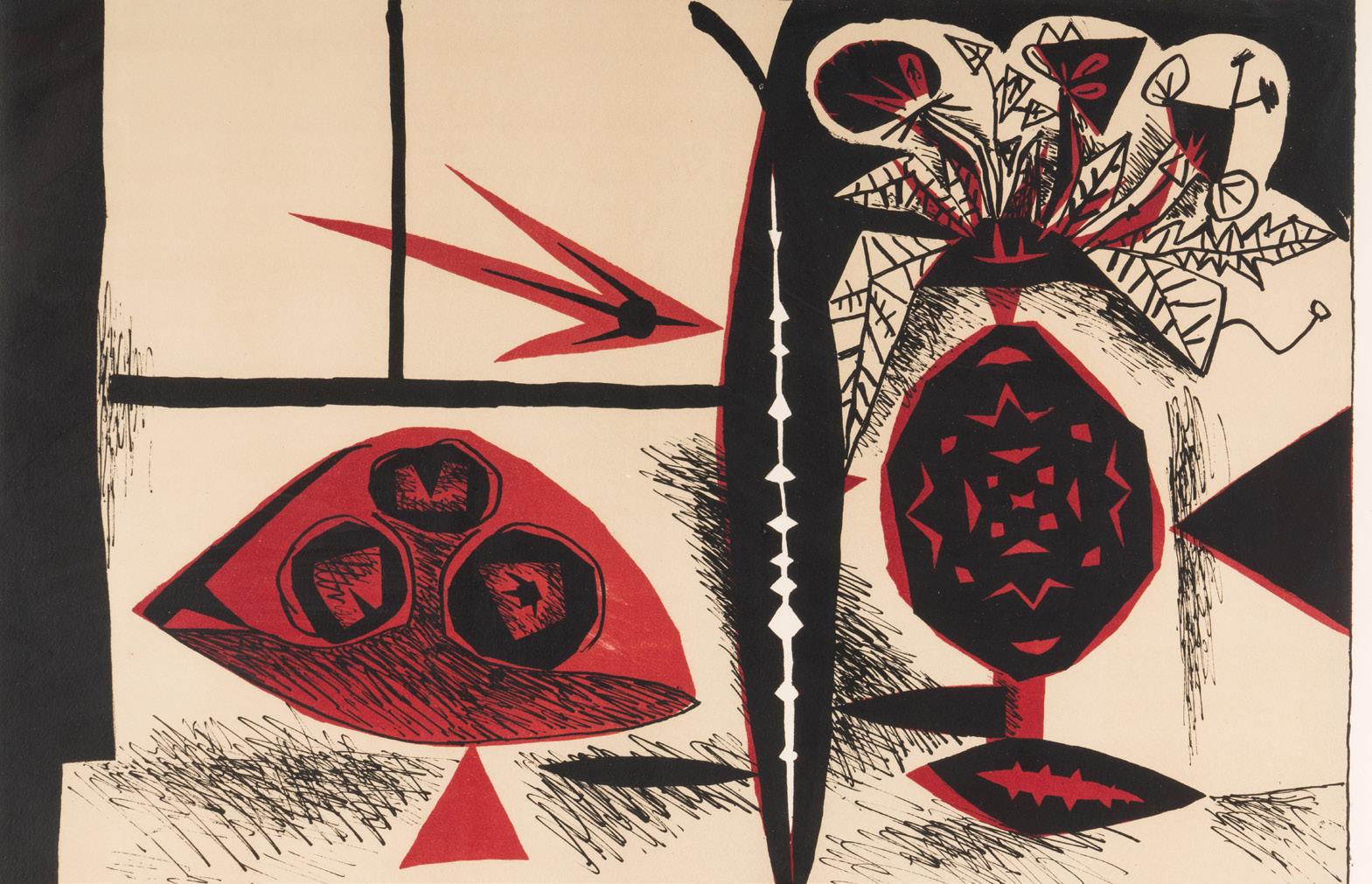
This September, Freeman’s | Hindman is thrilled to celebrate the 10th anniversary of our St. Louis office. Since opening in 2014, we have readily served the auction and appraisal needs of clients across Missouri, Kansas, and Arkansas. Anna Shaver, Vice President of the Trusts, Estates, and Private Clients Group, spearheaded the establishment of the office and has been instrumental in expanding the firm’s presence in the region. A life-long St. Louisan, Anna worked at the Contemporary Art Museum Saint Louis prior to joining Freeman’s | Hindman and has deep and established relationships with local trust officers, estate planning attorneys, fiduciaries, and museum professionals.
As we welcome fall, Freeman’s | Hindman is excited to present a season of remarkable firsts across our six salerooms. In New York, we will host our inaugural various-owner Asian Works of Art and Important Jewelry auctions in our new Upper East Side saleroom while in Chicago, we will present our first Fine Art auction dedicated to Pablo Picasso on September 26. This will be followed by our new Impressionist and Modern Art auction on October 28 and the merged firm’s first 19th Century European Art and Old Masters sale on November 7, both held in Philadelphia.
Pablo Picasso
(Spanish, 1881–1973)
Composition au Vase de Fleurs, 1947
$6,000 - 8,000
Property from a Private Collection, Philadelphia, Pennsylvania
Throughout the year, we are actively growing our in-house expertise and building upon the existing strengths of our specialist and Trusts, Estates and Private Clients teams. With new hires across collecting categories, Freeman’s | Hindman increases the breadth and depth of our knowledge of both historical trends and current market directions to further diversify our offerings and to deliver consistently excellent results for our clients. We are thrilled to welcome Roger Ward as Head of Design, Leslie Calero as Director of Trusts, Estates and Private Clients in Naples, Christopher Brink as Senior Specialist of Books and Manuscripts, and Dianne Batista as Senior Vice President of Jewelry and Watches.
Freeman’s | Hindman is deeply committed to the arts and communities where we operate, proudly partnering with charities and nonprofits to support their fundraising efforts. Our team is dedicated to assisting partner organizations by providing charity auctioneers for fundraising events and benefits. Recently, Freeman’s | Hindman’s CEO, Alyssa D. Quinlan, served as a charity auctioneer at the Lincoln Park Zoo Ball in Chicago and the Old Bags Luncheon benefiting the Center for Family Services of Palm Beach County. Looking ahead, we’re honored to collaborate with the Woman’s Board of Rush University Medical Center for their fall benefit, the Chicago Men’s Fashion Awards benefiting the Chicago History Museum, and many other impactful initiatives.

BY XUANYU LI, ASSOCIATE SPECIALIST, ASIAN ART
During Asia Week New York this September, Freeman's | Hindman will host its inaugural Asian Works of Art auction in the city on the 20th, with highlights on view for clients in town for the events.
Within the New York sale, and a subsequent auction in Philadelphia on the 27th, we are thrilled to present a range of property. We are offering a superb collection of Qing Dynasty (1644-1911) textiles assembled by Mr. M. Lee Smith over 30 years, all acquired from other collectors and prominent auction houses. Notably, this collection is encyclopedic in terms of civil badges, covering all civil ranks and some military ranks.
We are also privileged to present a selection of Yixing Zisha pottery wares that embody scholarly
leisure. The collection includes a rare wine cup and water coupe bearing the marks of the 17th/18thcentury master Chen Mingyuan, formerly from Colonel Lee Gee-Rie’s collection, and once treasured by the famous Shanghai connoisseur Pang Yuanji (1864-1949). The wares are illustrated in the Xu Zhai compendium and the book Zisha: The Purple Sand of China by E&J Frankel Ltd.
Two late Ming to Early Qing fan paintings from an established Indiana collection capture the essence of Jiangnan scholars Ye Younian and Pan Gongshou. The second fan painting, acquired from
ABOVE, TO BE OFFERED SEPTEMBER 20, NEW YORK
A Chinese Finely Carved Pale Celadon Jade ‘Scholars in Landscape’ Plaque, 18th/19th Century
清中期 青白玉攜琴訪友圖屏
$10,000 - 20,000
Property from a Private Canadian Collector
BELOW, TO BE OFFERED SEPTEMBER 20, NEW YORK
A Large and Fine Chinese Blue and White Porcelain Hu Vase, 18th/19th Century
清中期 青花纏枝花卉紋大貫耳壺
$20,000 - 30,000
Property from the family of Patrick R. Griffin, Naples, Florida

the Indianapolis Museum of Art in 1985, depicting Shigong Mountain, also incorporates inscriptions by the renowned calligrapher Wang Wenzhi.
The modern painting section is particularly strong, featuring a fine group of works by Ding Yanyong (1902-1978), known as the “Matisse of the East.” These works were gifted to the current owner, who was one of the master’s first Western pupils, between 1975 and 1976. Paintings from this collection have been 100% sold in the last two auctions. An elegant Osmanthus painting by the important artist Qi Baishi (1864-1957) from a private Chicago collection will be offered. According to the title slip on the bag, the painting is dated 1940, and dedicated to Mr. Morita Genjiro (Consul of Japan stationed in Northeast China in the earlymid 20th Century).
Another painting, Five Immortals Gathering , exudes joy and was created by the renowned merchant and painter Wang Zhen (1867-1938) in 1933. It comes from an inherited private Philadelphia collection.
In the realm of porcelains, we will present an impressive 18th/19th-century Chinese blue and white porcelain hu vase with distinguished motifs, which has been held within an American household for approximately 100 years. This will be accompanied by another distinguished private collection of Chinese porcelains, including a meticulously painted Kangxi period (1662-1722) gilt-decorated mirror-black glazed Meiping vase.
Favored by jade collectors, a finely carved 18th/19thcentury Chinese pale celadon jade ‘Scholars in Landscape’ plaque from a private Canadian collection will be featured in the New York sale. Also included is a Chinese pale celadon jade censer and cover, decorated with mythical beast headform handles, all with a nicely polished surface.
We extend our invitation to you to visit our website and attend our previews in both New York and Philadelphia.
INQUIRIES: xli@freemansauction.com
VIEWING: 14 - 19 September
32 East 67th Street, New York, NY


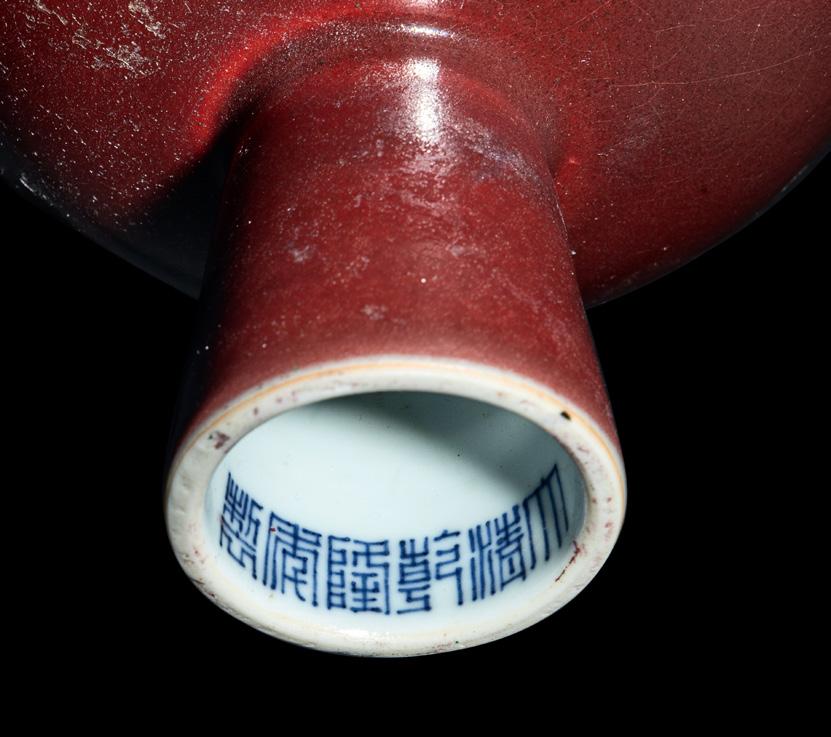
BY ANNIE WU, VP, HEAD OF DEPARTMENT, ASIAN WORKS OF ART KRISTIN VAUGHN, SVP, TRUSTS, ESTATES AND PRIVATE CLIENTS, ATLANTA
During his many travels to Asia, Dr. James Dew became enamored with porcelain. He focused his collection primarily on simple, but lovely, monochromatic forms—in particular, Chinese monochrome glazed porcelain from the 16th through the 19th century. Early Chinese monochromes were mostly black, celadon, or white. As competition amongst kilns heightened, however, other colors— such as the fiery red represented in Dr. Dew’s collection—became desirable. He also selected rare and fine examples of Chinese export wares from the Kangxi and Qianlong periods while traveling abroad, including examples that are often unavailable on the market.
During his collecting journey, Dr. Dew became a voracious student reading books and periodicals on Asian porcelain. He also became a member of prestigious groups, such as the Oriental Ceramic Society and the Atlanta, Georgia Chapter for Ceramics Circle, where he learned from the best and developed an eye for the most important categories during the Qing Dynasty (1644-1911), a great collecting era in the history of Chinese porcelain.
Dr. Dew also turned his eye to Japanese Nabeshima porcelain, a high-quality porcelain from Hizen and produced by the Nabeshima clan in Okawachi between the 17th and the late 19th centuries. There are several sets of fine Nabeshima porcelain plates in Dr. Dew’s collection. The exquisite brush detail in cobalt blue underglaze is beautiful and the clan enjoyed using these wares or giving them as gifts.
Freeman’s | Hindman is pleased to present the highlights from The Dew Collection at auction this September within Asian Works of Art auctions on September 20 and 27.
INQUIRIES: kristinvaughn@hindmanauctions.com
VIEWING: 14 - 19 September
32 East 67th Street, New York, NY
TO BE OFFERED SEPTEMBER 20 AND 27, NEW YORK
A Chinese Copper Red Glazed Porcelain Stem Bowl, Qianlong Period (1735-1796)
清乾隆 寶石紅釉高足碗
$3,000 - 5,000
BY RAPHAËL CHATROUX, VP, HEAD OF DEPARTMENT, IMPRESSIONIST AND MODERN ART
Freeman’s | Hindman is pleased to present the single-owner Collection of Richard J. Wattenmaker on September 22 in Philadelphia. Among the many fine art, furniture, and decorative items on offer will be a selection of about twenty oils and works on paper by Jean Hugo, a personal friend of the collector and his wife, Eva. This will be the first time so many works are offered at once on the open market—a unique opportunity timed to coincide with the 40th anniversary of the artist’s passing, which is currently celebrated in France through three major retrospective exhibitions in Lunel, Montpellier, and Sète.

Despite his illustrious lineage (he was the great grandson of famed novelist Victor Hugo), Jean Hugo was an autodidact who successfully made a name for himself as a stage and costume designer, portraitist, illustrator, and landscapist. Brought-up in a well-to-do circle in Paris, Hugo developed his expert style while a poilu during WWI and after the war by working for important names of French theater such as Jean Cocteau or Raymond Radiguet. In 1929, after years of Parisian frenzy, he retreated to his Estate in Lunel, near Montpellier—“a country where he could paint centaurs, witches, unicorns and saints under fig trees,” says Patrick Jourdan.
Hugo’s work, traditionally colorful gouaches executed in a very small format, is marked by a strong sense of detail and precision. Mixing real life with fantastical, sometimes even magical, elements, Hugo created timeless and lyrical scenes, which channeled a medieval aesthetic to, in the end, form a “precious and marvelously colored image of a universe that one can hold in their hand” as Emmanuel Boudot-Lamotte commented in 1941.
The many works on offer in the Wattenmaker sale are fresh, and important examples of the artist’s poetry. They also speak to Hugo’s evolution of style, and various influences throughout his sixty-year long career. From the two striking and mature oils on offer, La Cuisine du Presbytère and Intérieur Bleu (both still lifes), which undoubtedly evoke Hugo’s fascination with the Master colorist Henri Matisse, to gouaches such as the classicized Le Plafond , which channels Picasso and the Surrealists (to whom he was introduced by his wife, Valentine Gross), as well as Sous-Bois au Verdus and study for Le PetitLuc clear evocations of le Douanier Rousseau, Hugo was able to transform different versions of reality into a fantastical, and bold dream.
INQUIRIES: rchatroux@freemansauction.com
VIEWING: 13 - 22 September 2400 Market St, Philadelphia, PA
Jean Hugo (French, 1894-1984)
Le Peintre dans son Atelier , 1929
Gouache on paper laid down to canvas
$3,000 - 5,000
BY TIM PRINCE, SENIOR CONSULTING SPECIALIST, ARMS, ARMOR AND MILITARIA
The Winchester Model 1866 Rifle revolutionized the firearms industry and became the first product to be offered by the famous Winchester Repeating Arms Company.
For collectors, one of the most desirable variants of the 1866 is the Saddle Ring Carbine, as these shorter, handier versions of the gun were popular with horsemen in the American West. The carbines were also produced in fewer numbers than the rifles, making them less common on today’s collector’s market.

Nicknamed the “Yellow Boy” due to the use of “gunmetal,” a brass-bronze alloy, for the gun’s frame, the 1866 quickly became a popular repeating rifle used throughout the American West by settlers, lawmen, outlaws, and Native Americans alike. The guns were produced in three primary models, a 24” barreled rifle, a 27” barreled musket, and a 20” barreled saddle ring carbine. While never adopted by the US military, the 1866 was acquired in some numbers by the French during the Franco-Prussian War, by the Ottoman Empire during the Russo-Turkish War, and by the Mexican government as well. Despite becoming somewhat outdated by the introduction of Winchester’s Model 1873 Rifle which fired the new centerfire, rather than rimfire ammunition, the Model 1866 remained in production for slightly more than three decades with some 170,101 being produced between 1866 and 1898.
The most desirable of these guns are either those with provenance connecting them to a specific western luminary or those enhanced with engraving by the most famous engravers of the period—Nimschke, Young, or the Ulrichs. This particular example was produced in 1887 and is engraved with the Mexican “Eagle & Snake” motif. Several similarly decorated Model 1866s are attributed as engraving done by the Ulrich Brothers. The decoration suggests that this gun may have stories to tell of bandits and Federales south of the boarder during the turbulent decades that preceded the Mexican Revolution.
INQUIRIES: timprince@hindmanauctions.com

TO BE OFFERED, OCTOBER 23, CINCINNATI
Engraved Winchester Model 1866 Saddle Ring Carbine
Attributed to the Ulrich Brothers
$9,000 - 12,000
BY JACOB COLEY, VP, HEAD OF DEPARTMENT, ANTIQUITIES AND ANCIENT ART
Running from 25 September to 4 October 2024 at Freeman’s | Hindman’s New York gallery, the upcoming exhibition Love and War explores the enduring themes of conflict and affection through the lens of ancient and neoclassical art. This small but evocative display brings together a curated selection of GrecoRoman arms and armor, pottery, and wearable art, complemented by Old Master paintings.
At the heart of the exhibition is a stunning terracotta figure of a goddess, draped in a beautifully flowing himation, embodying the delicate balance between vulnerability and power. Alongside this, the collection features helmets and weaponry that have borne witness to the brutality of ancient conflicts, juxtaposed with delicate jewelry and intaglios that celebrate mythological tales of love and desire.
The intersection of these themes—love as a force that can both heal and destroy, and war as an act of passion and fury—resonates across millennia. The exhibition not only offers a glimpse into the material culture of ancient societies but also invites reflection on the human experience. From the formidable armor that protected warriors to the exquisite adornments that symbolized status and attraction, each piece tells a story of its own.
Love and War promises to be an engaging experience for visitors, a showcase of how these universal themes have been expressed through the ages in art and objects, reminding us that love and war have always been intertwined, driving human history forward.
INQUIRIES: jacobcoley@hindmanauctions.com
VIEWING: 25 September - 4 October 32 East 67th Street, New York, NY
TO BE EXHIBITED SEPTEMBER 25 – OCTOBER 4, NEW YORK
An Illyrian Bronze Helmet Incised with Two Horse Heads Circa 5th Century B.C.
A print from a terracotta antefix once in the collection of Giampietro Campana, now in the Louvre, inv. Cp 3747 (list 53), that depicts Venus, the goddess of love, looking seductively at Mars, the god of war, each deity in its characteristic way “dressed to kill.”



BY CHRISTINA KIRIAKOS, CATALOGUER, PRINTS AND MULTIPLES
Offered from the collection of Velma Engels, Denver, Colorado, the striking screenprint Target (1974) by celebrated American artist Jasper Johns (b. 1930) exemplifies Johns’ preoccupation with the intersections of abstraction and representational objects and the mechanical and the manmade.
In the work, concentric circles of blue and yellow sit on a field of mostly bright red, the boldness of the red heightened by undertones of green, while a band of the secondary colors of green, orange, and purple span the upper edge of the image. Though a screenprint, printed by Simca Print Artists, New York, the application of color is purposefully painterly, building up layers of pure color in brushstrokelike swipes and complete with surgically applied “accidental” streaks and drips of pigment, as though of wet media applied to a work hanging on a wall.
Heralded for his work in reintroducing representational forms back into abstraction, including series of flags, numbers, and targets beginning in 1954, Johns offers a unique perspective on how the formal properties of creating art can affect the relationship the viewer has with previously overlooked quotidian forms. Johns described in a 1965 interview how he became drawn to such forms:
The target seemed to me to occupy a certain kind of relationship to seeing the way we see and to things in the world which we see, and this is the same kind of relationship that the flag had. We say it comes automatically. Automatically you tend to do this, but you see that there are relationships which can be made and those seem to me the relationships that could be made between two images. They’re both things which are seen and not looked at, not examined, and they both have clearly defined areas which could be measured and transferred to canvas. i
In taking an easily recognized form and decontextualizing it through artistic intervention, the viewer can reexamine the object's formal abstract possibilities. In employing the use of screenprinting to this artistic intervention, Johns was also able to complicate the relationship between the mechanical and the manmade and further invite his audience to reengage with previously familiar elements.
For Johns, “in making a painting, you work with what you see and what you do and the painting seems to me to be primarily concerned with those two things. The physical actions you take to make the painting, and the responses to looking at it.” ii
Typically, the making of targets is a mechanical process. This target, however, takes the imagery associated with a target, repurposed through Johns’ intervention, and then likewise mechanically reproduced through the screenprinting process in order to make a uniform edition. The contrast of Johns’ target with the original mass-produced one is his use of composition and bold color that affects the response to the image, including the perfectly repeatable imperfect drips and ink dabs that provide testament to his intervention.
Thus, this tour-de-force image offers a fascinating study of the abstraction of identifiable symbols and our understanding of them as well as the dichotomy between the hand of the artist and that which is exactly reproduced in this age of commercial reproduction.
INQUIRIES: christinakiriakos@hindmanauctions.com
NEW YORK VIEWING: 6 - 20 September 32 East 67th Street, New York, NY
CHICAGO VIEWING: 25 - 26 September 1550 West Carroll Avenue, Chicago, IL
Walter Hopps, “An Interview with Jasper Johns,” Artforum, March, 1965, https://www.artforum.com/features/an-interviewwith-jasper-johns-211898/.
ii Ibid.
OPPOSITE, TO BE OFFERED 12PM CT SEPTEMBER 26, CHICAGO
Jasper Johns (American, b. 1930)
Target, 1974
Estimate $150,000 – 250,000
Property from the Collection of Velma Engels, Denver, Colorado
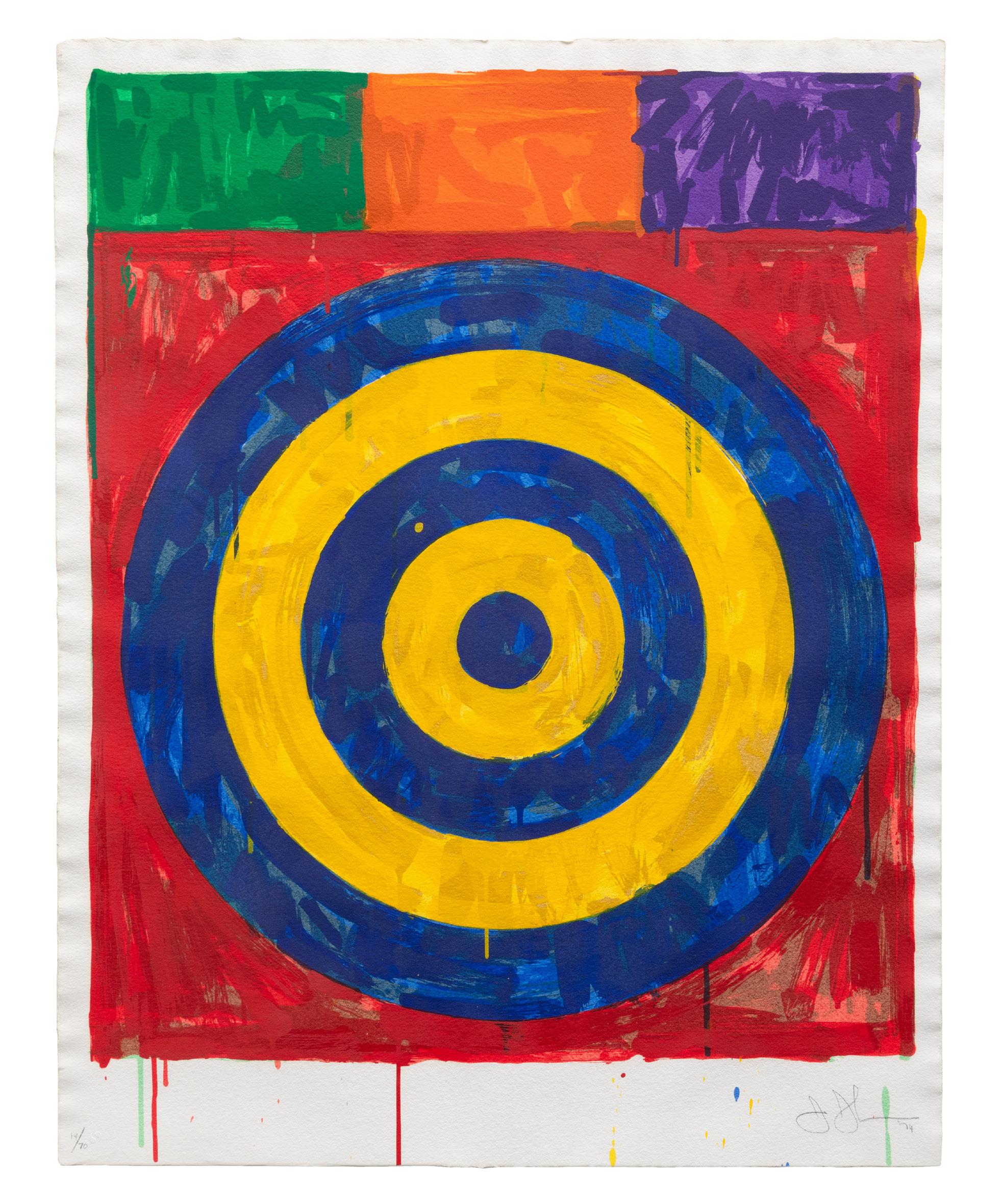
BY NICK COOMBS, AVP, SENIOR SPECIALIST, EUROPEAN FURNITURE AND DECORATIVE ARTS
Drawing from the zenith of the Danish silversmith’s design oeuvre, Design for Living: A Private Collection of Georg Jensen Silver brings together iconic and rare examples of silver hollowware in a single collection. The group shows a deep understanding and appreciation for the overarching motifs of Jensen and the master designers that created the ubiquitous style that still resonates with tastemakers, scholars, and collectors into the 21st century.
Many of the items in this sale bear marks that date their creation during the life of Georg Jensen (1866-1935) and famous designers like Johan Rohde (1856-1935), Harald Nielsen (1892-1977), and Sigvard Bernadotte (1907-2002). Furthermore, the collection spans over half a century of design within the firm and further shows how the motifs and style of Georg Jensen continued to evolve while maintaining an understanding and reverence of the patterns and designs that came before them.
Within the collection, familiar motifs like the grapevine, blossom, cactus, and louvre appear alongside rare and desirable forms that scholars and collectors will recognize as standout works from the firm. A pair of large five-light candelabra designed by Johan Rohde blend classical motifs along the stem with grape cluster and dolphin motifs to blend modernity and classicism exemplifying the vision of both Rohde and the larger Georg Jensen firm. They would go on to achieve world-renown for it in the 20th century.
Nearly 50 years following the creation of the Rohde candelabra, Sigvard Bernadotte’s No. 855B candlesticks further solidify Georg Jensen Silversmithy’s reputation of timeless design in the 20th century. The motif of the fluted columns seen in Rohde’s candlesticks is repeated in Bernadotte’s examples. The rest of the decoration remains linear and restrained, highlighting the form and craftsmanship of the candlesticks that the Jensen firm would use to solidify its reputation throughout the decades.
The collection featured in Design for Living: A Private Collection of Georg Jensen Silver represents decades of vigorous collecting and understanding of the Georg Jensen firm’s importance in design over 100 years. Freeman’s | Hindman is honored to be able to present this curated collection which will further showcase the firm’s preeminence in design to the world.

INQUIRIES: nickcoombs@hindmanauctions.com
LONDON HIGHLIGHTS VIEWING: 8 - 10 October
Lyon & Turnbull, 22 Connaught Street, London, England
NEW YORK HIGHLIGHTS VIEWING: 7 - 10 November
32 East 67th Street, New York, NY

TO BE OFFERED DECEMBER 11, NEW YORK
A Pair of Georg Jensen Five-Light Candelabra
$50,000 - 70,000
A Pair of Georg Jensen Silver Five-Light Candelabras
$30,000 - 50,000
A Georg Jensen Silver Centerpiece Bowl
$10,000 - 20,000
A Georg Jensen Silver Grapevine Tureen
$4,000 - 6,000
A Georg Jensen Silver Box
$4,000 - 6,000
A Chippendale walnut chest-on-chest with an extremely unusual and possibly unique pierced tympanum and joined scrolls recently returned to the city of its origin—Philadelphia—from Pasadena, California. Dating to about 1750, the piece retains a historic finish, original brass hardware, two finials, and exhibits relatively minor mends and restorations. The construction techniques and secondary woods of tulip poplar and white cedar, are typical to mid-18th century Philadelphia-made furniture. The carving on the upper-case central drawer suggests an attribution to the Wilkinson-Harding group discussed by Luke Beckerdite in Brian Wilkinson, Samuel Harding, and Philadelphia Carving in the Early Georgian Style, American Furniture, (The Chipstone Foundation, 2020), pp. 120-159.
According to the consignor’s family records, the chest-on-chest descended directly to the present owner from Elizabeth Hutchins Carter (1769-1832) of Philadelphia. Elizabeth was the daughter of devout Quakers, Hugh Hutchins (1732- 1784) and Ann Ivins Nutt Hutchins (1730-1788) of Burlington County, New Jersey, members of the Chesterfield Monthly Meeting and Philadelphia Yearly Meeting. The original owner of the chest-on-chest may have been Elizabeth’s mother, Ann Ivans, whose first marriage to Levi Nutt (1726-1763) took place in 1748. Elizabeth also married twice: to William Byles Thorne (1766-1796) in 1792, and to Sharon Carter (1772-1861) in 1799.
INQUIRIES: Lynda Cain lcain@freemansauction.com
TO BE OFFERED NOVEMBER 19, PHILADELPHIA
Chippendale Carved Walnut Chest
$20,000 - 30,000
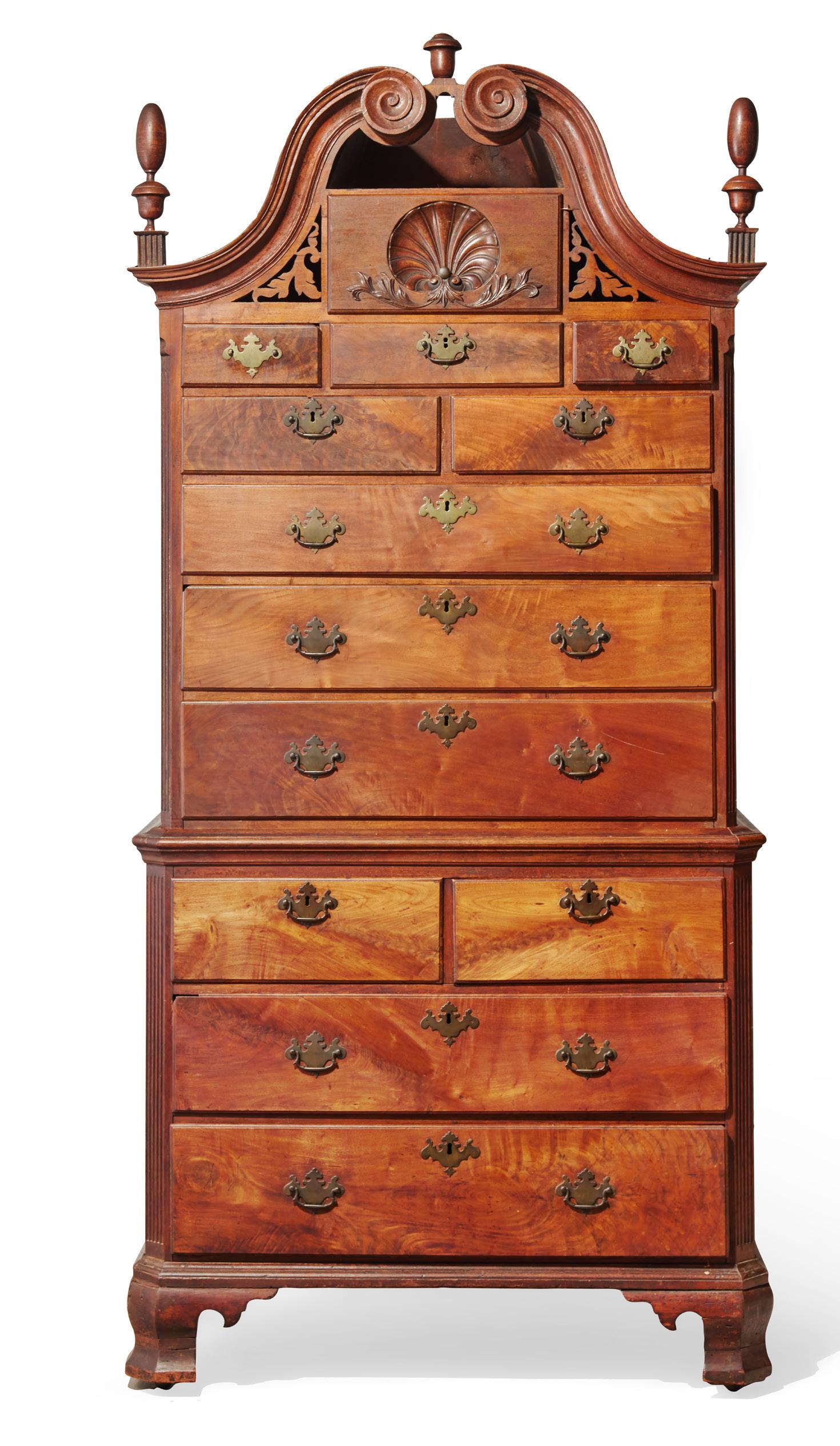



W illiam “Bill” Clifton Buck (1928-2023) was a successful businessman, avid sportsman, and leader within the Philadelphia community. He attended Haverford School, where he excelled in both sports and music. Bill continued his education at Lafayette College, where he majored in Economics. After graduation, he served in the military with the First Philadelphia City Cavalry in Germany during the Korean War and later joined the family business, Smith Kline and French (later GlaxoSmithKline). Alongside his brothers, he founded and expanded The Drug House and later established TDH, a venture capital firm that invested in major companies such as ESPN and Staples.
Bill married Laura Thomas (1931-2024) in 1954, and they enjoyed a vibrant 68-year marriage. Together, they were active philanthropists, supporting numerous causes, in Philadelphia, Vero Beach, and Nantucket. “Bucktucket,” their beloved Nantucket residence, offered an impressive backdrop for both the couple’s collection of Nantucket art and ephemera, and Laura’s organic cottage garden, a bellwether of the responsible horticulture movement. Given her keen aesthetic eye, Laura was a dedicated member of the island’s Garden Club. Back in Philadelphia, the Bucks actively supported the Philadelphia Museum of Art,
the Barnes Foundation, and the Philadelphia Antique Show. Bill’s lifelong passion for baseball led him to become a partner in the Philadelphia Phillies in 1981, and he cherished the team’s successes, including the 2008 World Series win.
The furnishings of Bucktucket, a traditional cedarshake house built by Bill and Laura, and of the couple’s Villanova residence seamlessly blended their varied interests into an inviting and cohesive aesthetic, marked by several spectacular pieces that will be offered in a single-owner section in the November 19th, American Furniture, Folk and Decorative Arts Auction in Philadelphia. They loved discovering just the right things to fill their homes, meeting artists and dealers along the way.
Article continues next page
OPPOSITE, TO BE OFFERED NOVEMBER 19, PHILADELPHIA
A Chippendale Carved Mahogany Tall Case Clock
$10,000 - 20,000
The Bucks’ collection of fine period furniture is anchored by a handsome Federal mahogany tall case clock by Massachusetts clockmaker Aaron Willard (1757-1844). Also of particular interest is a painting by Grandma Moses (1860-1961) entitled Hoosick Hills, which depicts a sleepy town nestled among the rolling hills of upper New York State near the border with Vermont. Maritime art is another strength of the collection, including whimsical works by Ralph Cahoon, ship portraits by Antonio Jacobsen, scrimshaw, sailor’s valentines, and English woolwork pictures. Prominently featured is the work of contemporary mixed media shellwork artist Mellie Cooper (born 1949), a mainstay in Nantucket art circles since her early shows at the Sailor Valentine Gallery in the 1980s. The collection also includes ceramics, ranging from Chinese export porcelain to a George Jones majolica sardine box and a highrelief porcelain platter by contemporary maker Maria Superior (born 1951).
Additionally, the Bucks sought significant paintings by Impressionists, especially Americans such as Maurice B. Prendergast, Willard Leroy Metcalf, Charles Morris Young, and William Glackens—all to be offered in Freeman’s | Hindman’s sale of American Art on December 8, 2024. Other standouts include two still life works by French-Vietnamese artist Lê Phổ, whose market continues to soar. These examples will star in our inaugural October 28 sale of Impressionist and Modern Art in Philadelphia.
INQUIRIES: benfisher@hindmanauctions.com
TO BE OFFERED NOVEMBER 19, PHILADELPHIA
Grandma Moses (American, 1860-1961)
Hoosick Hills , 1950
$30,000 - 50,000


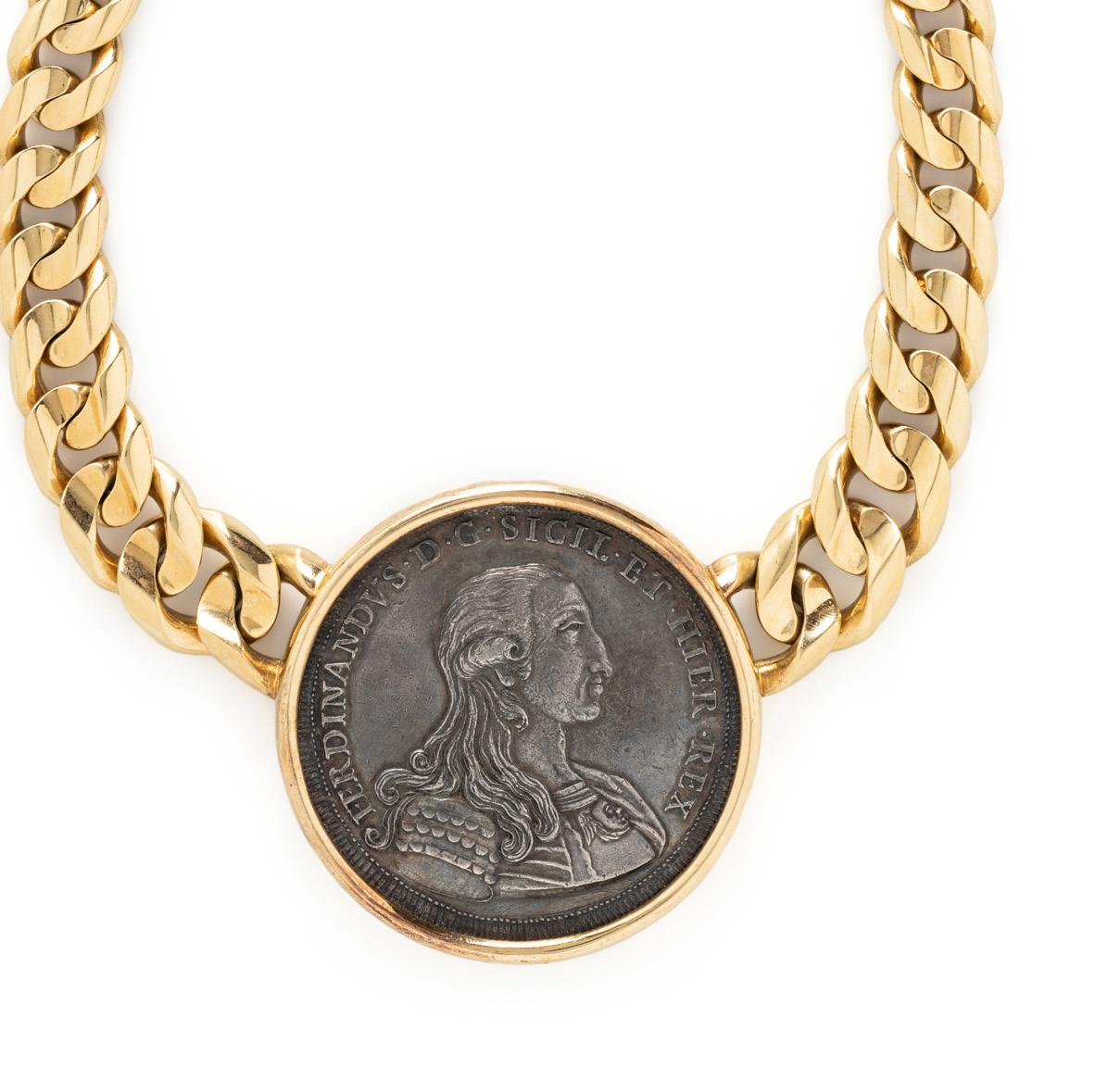
BY RUTH THUSTON, GG, SENIOR SPECIALIST, JEWELRY AND WATCHES
Coming up in Freeman’s | Hindman Important Jewelry auction on September 12, 2024 are three extraordinary Bulgari necklaces, circa 1980, consigned from a private Wisconsin collection. The attention to detail, superior craftsmanship, fine engraved gems, and rare coin featured in these pieces make them highly collectible. 1970-1980’s jewelry from Bulgari is particularly in demand, as the company was in an international expansive mode and at the top of fashion trends during this time.
Founded in 1884 by Sottiro Bulgari in Rome, Italy, the house had risen to become the place to shop for amazing jewels and gemstones. By 1960, Bulgari was frequented by celebrities from around the world including movie stars like Elizabeth Taylor, Sophia Loren, Isabella Rossellini, and Audrey Hepburn and was synonymous with the Italian La Dolce Vita era of cinema. When the third generation Bulgari brothers took over the family business in 1966, a flurry of creativity and expansion happened at the firm. The younger generation wanted to bring Bulgari to the world, especially jewelry that women could wear anytime, anywhere. In this spirit, they opened the first store outside of Rome in New York City’s Pierre Hotel in 1971. The Bulgari Historical Archive & Museum Office indicated that all three of these necklaces were likely produced by Bulgari for the American market although only one of the trio has written confirmation that it was, in fact, purchased at the Pierre Hotel boutique.
The Bulgari Agate Cameo, Diamond and Yellow Gold Necklace showcases a 19th century hardstone cameo of Napolean embellished with a diamond laurel wreath around his head. It is accented by diamonds in a scroll design and hangs from a gold curb link chain.
It is accompanied by a receipt dated 1985 confirming it was purchased at the Bulgari New York boutique which opened in 1971 in the famous Pierre Hotel.
Featured in the Bulgari Multigem, Intaglio, Yellow Gold Necklace is a carnelian intaglio suspended from bold multicolored gemstones in pink, lavender, and orange. This bold color palette and use of cabochons is a typical Bulgari style characteristic.
Finally, the Bulgari Coin, ‘Monete’ Necklace centers a rare Sicilian silver coin suspended from a signature Bulgari curb link chain. This example is of an extraordinary size, 2¼ inches in diameter, so, it really makes a statement!
Coin jewelry became synonymous with Bulgari ever since it was launched in 1966. Nicola Bulgari, the youngest brother, was fascinated by coins from an early age and collected them. Wanting to bring his passion to Bulgari jewelry, he began mounting coins in long gold chain necklaces. The necklaces were a hit. In the 1970s through the 1990s a Bulgari coin choker graced the necks of countless women and became a huge fashion statement. The coin jewelry was named, “Monete”, the Italian word for coin and remains highly sought after and collected. Freeman's | Hindman recently sold a smaller Monete necklace for $28,575. These necklaces are excellent examples of Bulgari’s commitment to using an historical element in many of their jewels. The founder of Bulgari, Sottiro, started his business selling antiques as well as jewelry. This passion for collecting continued in the family with his son, Giorgio and then his grandson, Nicola. Whether a coin or a one-of-a-kind cameo or intaglio connecting a fragment of the past to modern, bold jewelry is a winning combination.
INQUIRIES: ruththuston@hindmanauctions.com
VIEWING: 7 - 11 September
1550 West Carroll Avenue, Chicago, IL
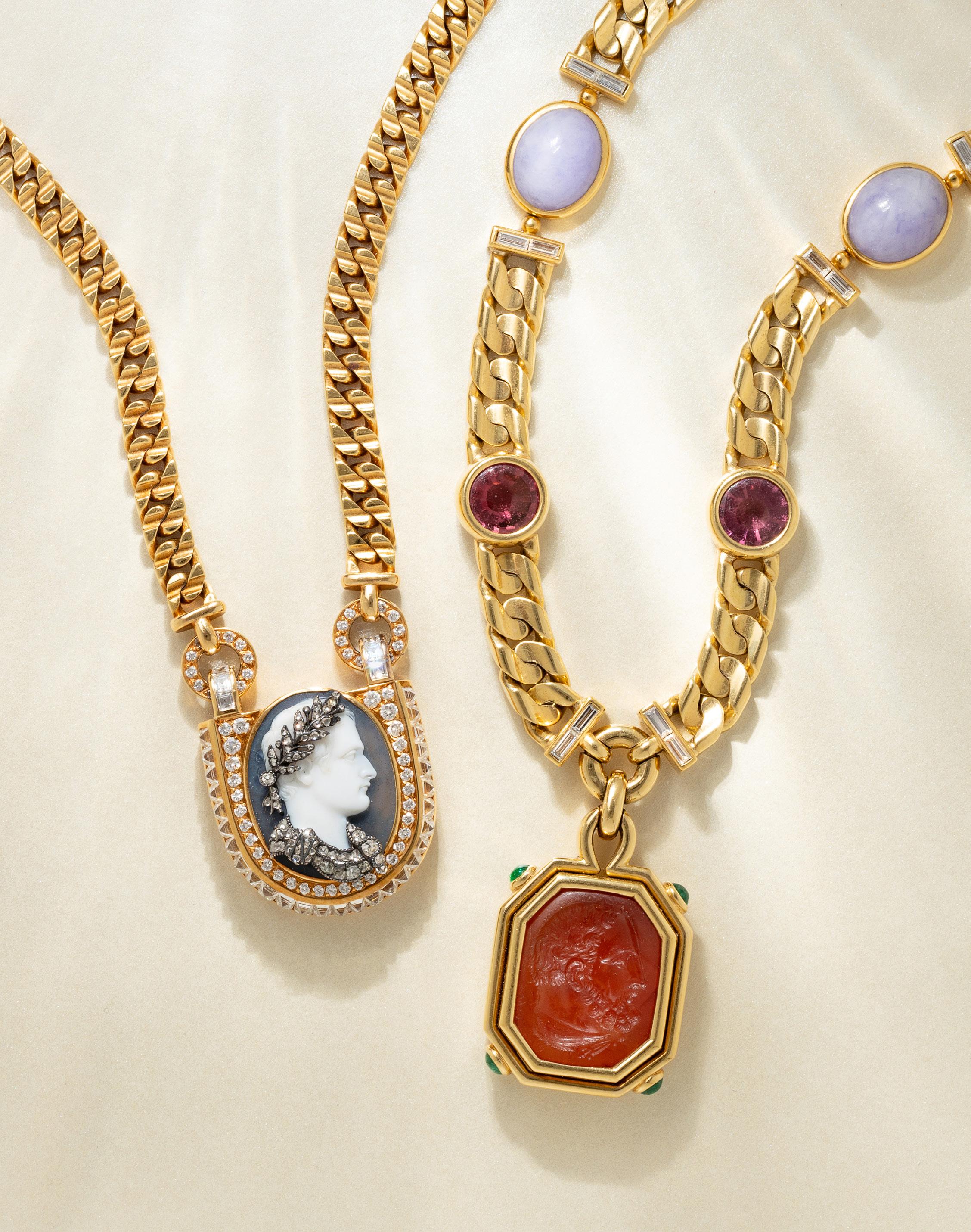
THIS PAGE, TO BE OFFERED SEPTEMBER 12, CHICAGO
BULGARI, AGATE CAMEO, DIAMOND AND YELLOW GOLD NECKLACE
$20,000 - 30,000
BULGARI, MULTIGEM, INTAGLIO AND YELLOW GOLD NECKLACE
$7,000 - 9,000
OPPOSITE, TO BE OFFERED SEPTEMBER 12, CHICAGO
BULGARI, COIN AND YELLOW GOLD ‘MONETE’ NECKLACE
$10,000 - 20,000
Property from a Private Collector, Wisconsin

BY DIANNE BATISTA, SVP, JEWELRY AND WATCHES
Some of the most famous diamonds in the world are not white or, as a diamantaire might say, “colorless.” The ‘Hope’ diamond is blue; the ‘Tiffany’ diamond—most recently worn by Beyoncé—is yellow, and the ‘Winston Pink Legacy’, an 18-carat fancy vivid pink, joined this roster setting a world record price in 2018 of $2.65 million per carat.
This September, Freeman’s | Hindman’s Important Jewelry auction will offer an impressive selection of rare fancy-colored diamonds, which come in a rich array of colors including pink, green, yellow, and orange. Natural fancy-colored diamonds are exceptionally rare, occurring in only about 1 in 100,000 diamonds. Among these, the majority are small, typically weighing less than 1 carat.
Spotlighting the Freeman’s | Hindman auction is an impressive Fancy Brownish Pink Diamond weighing 5.42 carats set in a beautiful ring. Like the ‘Pink Legacy,’ it is a classic rectangular shape, not commonly seen with pink diamonds. This clean, modern cut shows off its elegant hue. But, how did the diamond become pink? Unlike other colored diamonds which obtain their color from trace elements, pink diamonds are formed by further intense pressure and heat in the earth, distorting the atoms' lattice structure to only allow pink to be reflected. They are truly nature’s miracle and the second-rarest color in diamonds. Pink diamonds have become a celebrity favorite—a declaration of love in engagement rings for J. Lo, Blake Lively, and Victoria Beckham amongst the celebrities.
The important jewelry collection from The Shawver Art Collection Trust will be offered across several auctions this fall/winter and features both colored gems and diamonds. Patricia Shawver, a Phoenix native, had an eye for color and collected both colored sapphires and diamonds among other rare gems.
Three highlights are an Oscar Heyman Multi-colored Diamond Line Necklace featuring 20 carats of fancy color diamonds, a 10.43 cts. Fancy Greenish-yellow Pear-shaped Diamond Pendant, and an Oscar Heyman Fancy Deep Orange-yellow and Colorless Diamond ‘Moi et Toi’ Ring.


Yellow diamonds are the most prevalent of the fancy colors. Their color is created by the trace element of nitrogen in the diamond. Rather than being judged for lack of color, as white diamonds are, they are graded by hue and saturation of color. Among several yellow diamonds to be offered in this auction is the Fancy Intense Yellow Diamond and Diamond Ring, set with a 6.14 cts center stone. All from private collections, these gems are fresh to market, providing a unique collecting opportunity.
INQUIRIES: diannebatista@hindmanauctions.com
VIEWING: 7 - 11 September
1550 West Carroll Avenue, Chicago, IL
THIS PAGE, TO BE OFFERED SEPTEMBER 12, CHICAGO
ABOVE, FANCY BROWNISH PINK DIAMOND RING
$100,000 - 150,000
LEFT, FANCY INTENSE YELLOW DIAMOND AND DIAMOND RING
$30,000 - 50,000
The Collection of Audre Deckmann Carlin
OPPOSITE, TO BE OFFERED SEPTEMBER 12, CHICAGO
OSCAR HEYMAN, COLORED DIAMOND AND DIAMOND NECKLACE
$40,000 - 60,000
FANCY GREENISH YELLOW DIAMOND AND COLORED DIAMOND PENDANT
$60,000 - 80,000
OSCAR HEYMAN, FANCY DEEP ORANGE-YELLOW DIAMOND AND DIAMOND RING
$80,000 - 120,000
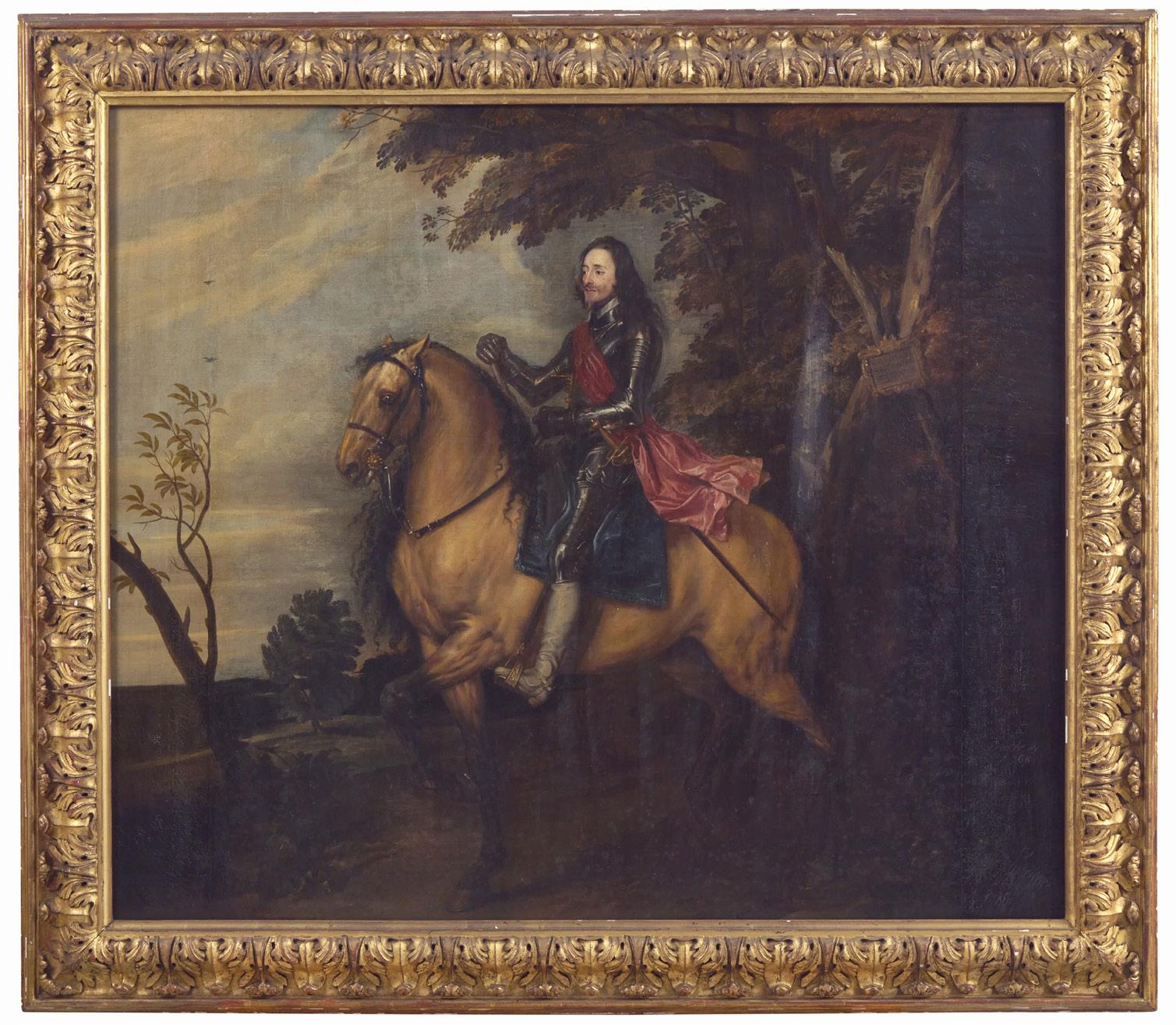
BY GEMMA SUDLOW, EVP, MANAGING DIRECTOR, NEW YORK
As an English-woman living in New York, I’ve made it my mission these past few years to celebrate British Royal events with a zeal never before known to me growing up in the UK. Last spring was no exception: my Westchester home was bedecked with bunting, the Victoria Sponge was sagging with jam and cream, and the gin and Pimms were flowing for the coronation of King Charles III. I find delight in the moments, then, where my former life and country of birth come to me in the most unexpected ways in my role as an auctioneer. The discovery, earlier this year, of a time-capsule collection from the country house of Copped Hall in Essex, by way of an estate in Greenwich Connecticut, has been a wonderful example of my old life colliding with my current one as I celebrate ten years as a New Yorker.
The sale this June on behalf of the Aline Elwes
McDonnell Trust was a highlight of our spring season where bidders from around the globe competed for a slice of English history with superb country house provenance. We kept one work as a highlight for our fall auction season and Old Master and 19th century pictures sale this November in Philadelphia.
At first glance, the work is a copy of the famous and larger-than-life equestrian portrait of King Charles I in the National Gallery, London. Pentiments, however, (the lack of the equerry offering up the helmet behind the horse, the red sash to King Charles I’s waist, differences in color to the saddle) all point towards this being an unusual copy with variations. Analysis indicates that this is likely a late 17th or early 18th century canvas with later additions to left and right (presumably added when the work was united with the present carved and gilded frame) with the central panel closely resembling in size the modello in the Royal Collection (RCIN 400571). Whilst not attributed to Van Dyck or his studio, the work joins the esteemed group of known country house copies listed in Susan J. Barnes et al., Van Dyck: A Complete Catalogue of the Paintings , New Haven and London: Yale University Press, 2004, pp. 468–71 and the early full-size copies in the collection of the Prado and (formerly) at Hitchin Priory. Reduced-size copies have been recorded at Hellens, Much Marcle, Ickworth, and the Clarendon Collection.
INQUIRIES: gemmasudlow@hindmanauctions.com
VIEWING: 23 September - 17 October 32 East 67th Street, New York, NY
OPPOSITE AND THIS PAGE (DETAIL), TO BE OFFERED NOVEMBER 7, PHILADELPHIA
After Sir Anthony Van Dyck
17th Century Charles I on Horseback
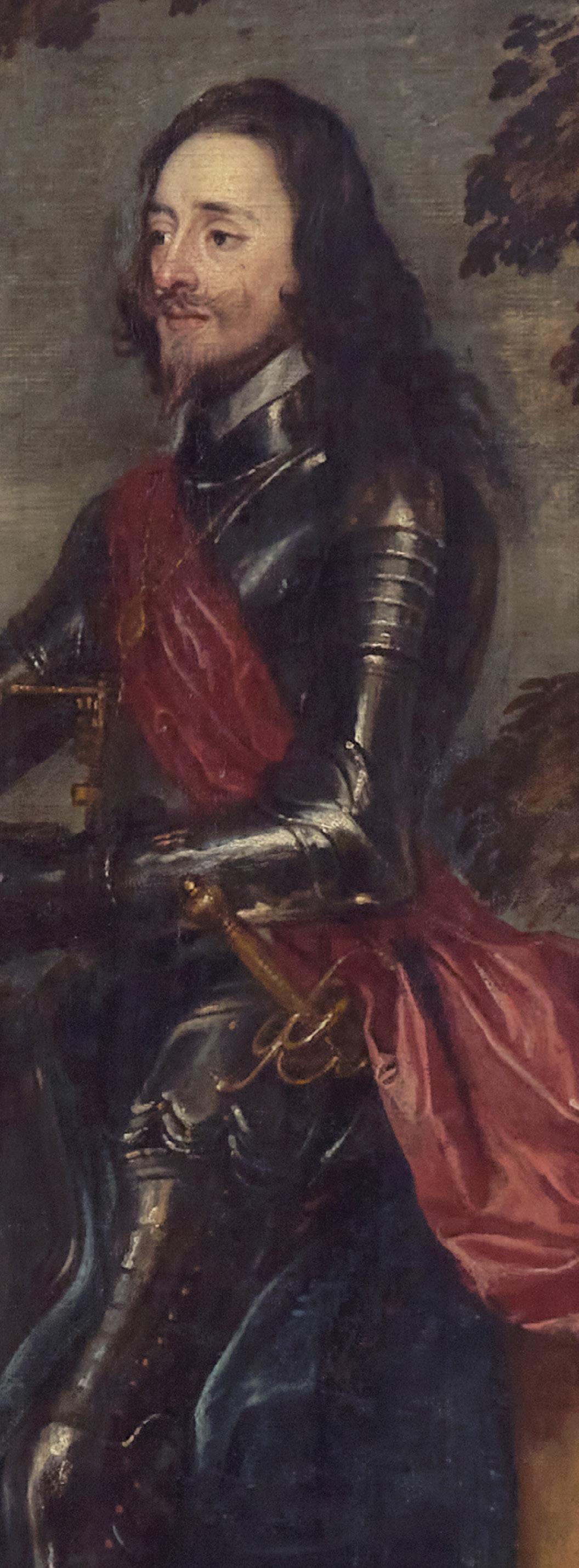


BY BEN FARINA, SVP, INTERNATIONAL SENIOR REPRESENTATIVE, ASIAN ART
The elegant and sophisticated Yixing stoneware ( Zisha ) scholar’s objects and tea wares of Chen Mingyuan (fl. Late 17th – early 18th century) have acquired a legendary status among collectors and connoisseurs of Chinese works of art. It has been suggested that surviving works worldwide may only number in the low hundreds, with a notable proportion preserved in the collections of the Shanghai Museum and the Museum of the Chinese University of Hong Kong.
Chen Mingyuan was renowned for his trompe l’oeil scholar’s object, often incorporating realistically modeled and colored fruits, nuts, and vegetables in creative compositions, with painstaking attention to detail. His manipulation of the Yixing clays, ranging from deep purple-brown and russet, to beige and pale yellow, accentuate the verisimilitude of the modeling, delighting those who admire his technique and style.
Chen’s works were so avidly collected in Shanghai in the 1920s and 1930s that contemporary masters created exceedingly fine forgeries which are also now greatly sought after. As a result, when high quality works attributable to Chen Mingyuan have been documented prior to this revival period, the likelihood of authenticity is greatly increased.
Freeman’s | Hindman is privileged to offer two rare works in our September 20 Asian Art auction: a floriform wine cup and a “Peach and Pomegranate” water coupe, which were known to have been in the renowned collection of Yixing wares assembled by the Shanghai connoisseur Pang Yuanji (1864-1947). Pang, together with the artist Lu Hui (1851-1920), compiled a very rare two-volume set of rubbings and descriptions of Yixing teapots and scholar’s objects in his collection, probably during the period between 1910 and 1920. For some time, the only known copy of this compendium was to be found in the library of
the Freer Gallery of Art, Washington, D. C. Rubbings and detailed descriptions of the present wine cup and water coupe are both included in the second volume. In the case of the wine cup, a rhapsodic appreciation is appended which may be translated as: “In Midsummer, in a cool poolside pavilion, pouring wine into this cup, entertaining an honored guest, the refreshing essence shall gladden the hearts.”
These exquisite works reward a close examination of the subtle details and modeling. The elegant cup has a realistically textured handle in the form of a gnarled branch with hollow center, and the subtly undulating sepals to the underside are centered by the artist’s impressed seal. The “Peach and Pomegranate” coupe is a tour de force of modeling, utilizing the wide array of colored Yixing clays to realistically depict the nine varied fruits, nuts, and vegetables in the composition. The later carved hardwood stands are also extremely finely executed, indicating the esteem in which these rare pieces have been held.
INQUIRIES: bfarina@freemansauction.com
VIEWING: 14 - 19 September
32 East 67th Street, New York, NY

OPPOSITE, TO BE OFFERED SEPTEMBER 20, NEW YORK
A Rare Yixing ‘Prunus Blossom’ Coupe with Impressed Seal
‘Chen Mingyuan’ and Wood Stand
清早期 陳鳴遠款朱泥紫砂梅花杯
Estimate $20,000 - 30,000
Property from the Estate of Betty Eisler, New York, New York
A Rare Chinese Yixing ‘Peach and Pomegranate’ Coupe
Inscribed ‘Chen Minyuan Zuo’ and Carved Wood Stand
清早期 陳鳴遠款段泥紫砂桃榴杯
Estimate $30,000 - 50,000
Property from the Estate of Betty Eisler, New York, New York

BY CHRISTINA KIRIAKOS, CATALOGUER, PRINTS AND MULTIPLES
Pablo Picasso’s lifelong commitment to experimentation was applied to a truly prolific use of theme and media. Freeman’s | Hindman is pleased to offer a fantastic survey of Picasso’s career through a dedicated sale showcasing the artist’s works on September 26. This sale reflects the artist’s particular advancement of prints and ceramics, including examples of etching, drypoint, lithograph, linocut, and various ceramics from plates to vases to pitchers, emphasizing both Picasso’s artistic preoccupations as well as his spirit of collaboration, highlighting lifelong relationships.
Through the prints and ceramics included here, Picasso explored artistic influences and new approaches, including past art historical tradition and mythology as well as new experiments based on the world around him such as those seen during his Blue Period and the development of Cubism.
The artist’s early masterpiece, Le Repas Frugal (1904; printed 1913)— The Frugal Repast —was one of his first etchings. Made during his Blue Period, it echoes the impoverished experiences of the artist at the start of his career, depicting a blind man and the artist's then lover, Madeleine, sitting down to a sparse meal. Meanwhile, the linocut L'Homme à la fraise echoes Spanish art historical tradition of Golden Age portraits by such artists as Diego Velázquez and El Greco of distinguished men with ruffled collars.
Another example of Picasso’s examination of the Spanish Golden Age translated into twentieth-century aesthetics are the two original copper plates for etchings from his 1948 suite illustrating the poems of Luis de Góngora. These plates allow a unique insight into Picasso’s working process for printmaking.
Important among this sale is the role of Picasso’s personal relationships and the subsequent effect on his work. This can be seen in his Cubist works of Jacqueline Roque, his second wife and muse, in both print—including the particularly striking linocut Jacqueline au Bandeau de Face (Grand Tête de Femme ) (1962)—and ceramic, such as in Jacqueline au chevalet (1956). But, in addition to Jacqueline, also clearly defined are Picasso’s relationships with the printers, publishers, and ceramists so crucial to the use of this media, a network of friends the artist grew and maintained throughout his career.
For his prints, among Picasso’s most important collaborators represented is Ambroise Vollard, Picasso’s early gallerist and publisher, who published both Le Repas Frugal and the well-known eponymous
Vollard Suite in 1939. Works made possible by gallerist and publisher Louise Leiris are highlighted, including examples by printers Hidalgo Arnéra and the brothers Piero and Aldo Crommelynck, such as from Picasso’s late etching series, Séries 347 (1968).
Article continues next page

THIS PAGE, TO BE OFFERED 10AM CT SEPTEMBER 26, CHICAGO
Pablo Picasso (1881–1973)
L’Homme à la fraise , 1963
$20,000 - 30,000
Property from a Private Collector, Milwaukee, Wisconsin
OPPOSITE, TO BE OFFERED 10AM CT SEPTEMBER 26, CHICAGO
Pablo Picasso (1881–1973)
Jacqueline au Bandeau de Face (Grand Tête de Femme) , 1962
$70,000 - 90,000
In 1946, Picasso and Louis Fort, the 1913 printer of Le Repas Frugal , were together in Vallauris, France, at a pottery exhibition where, impressed, Picasso asked to be introduced to the owners of Madoura, a local pottery workshop. By the following year, this original meeting with Suzanne and Georges Ramié would lead to a collaboration between Picasso and Madoura for 24 years. In addition to the range of Madoura works presented here which illustrate the fruits of this partnership, a particular highlight is the beautiful ceramic pitcher, Visage au nez noir, offered with the original crate from Madoura, complete with their signature stamps, as acquired by a noted Philadelphia collection directly in 1969.
This amazing selection of works thus embodies Picasso’s artistic vision and development from his twenties to his eighties, especially in highlighting the strength of his close circle of loved ones and collaborators who helped translate this developing vision into print and ceramic.
INQUIRIES: christinakiriakos@hindmanauctions.com
VIEWING: 23 - 25 September 1550 West Carroll Avenue, Chicago, IL
TO BE OFFERED 10AM CT SEPTEMBER 26, CHICAGO
Pablo Picasso (1881–1973)
Visage au nez noir (A.R. 609) including original wooden crate from Madoura, 1969
$30,000 - 50,000
Property from a Private Collection, Philadelphia, Pennsylvania


BY ZACK WIRSUM, SVP, HEAD OF DEPART MENT, POST WAR AND CONTEMPORARY ART
TO BE OFFERED SEPTEMBER 25, CHICAGO
Karl Wirsum (American, 1939-2021)
Please Don’t Get Up , 1980.
$30,000 – 50,000
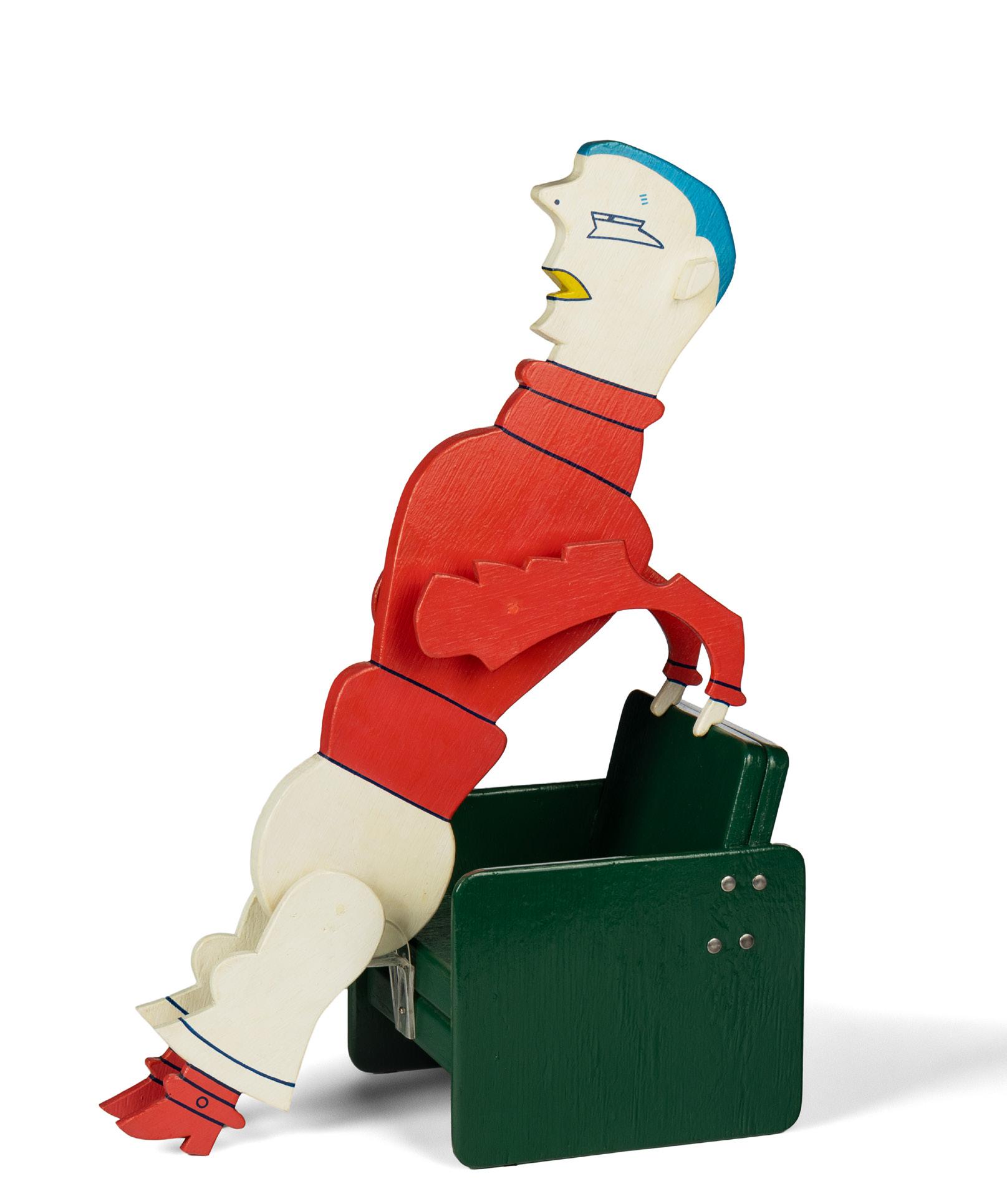
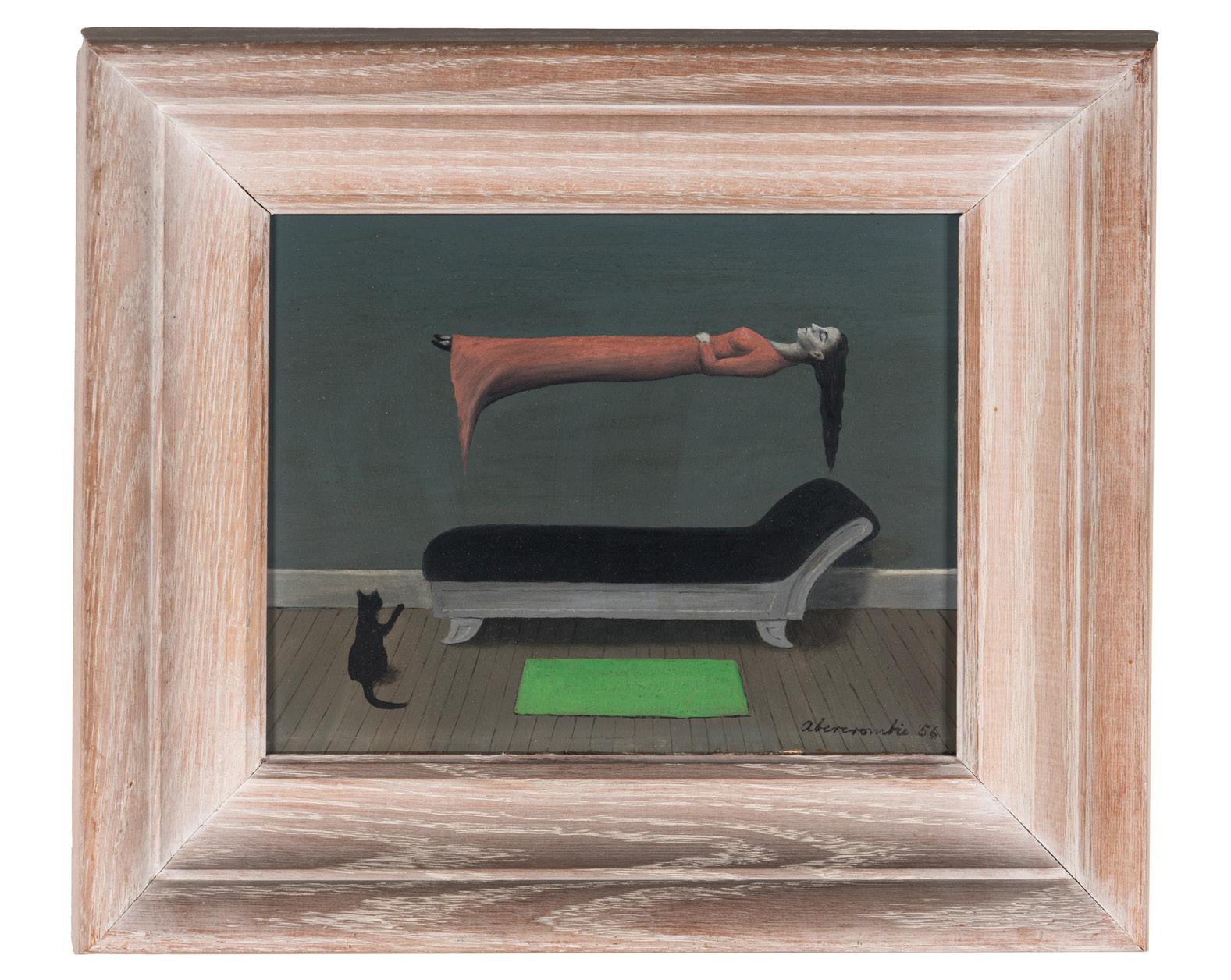
Since its founding in 1982, Hindman Auctions has long championed the works of hometown artists and earned the distinguished reputation of being the go-to destination for the best examples by the Chicago School including, but not limited to, the Hairy Who?, the Chicago Imagists, the Monster Roster, and Midwestern Magical Realists and Surrealists. Hindman’s unparalleled expertise and dedicated passionate promotion of these important artists has pushed their respective markets to new heights and propelled many from a regional audience to a worldwide stage with international demand from collectors, setting numerous auction records along the way.
Now better together, we look forward to carrying on this tradition of supporting locally sourced material as Freeman’s | Hindman is thrilled to have one of the strongest and widest ranging selections of works to come to auction in recent years by some of the most sought after Chicago makers in our September 25th Post War and Contemporary Art auction, serving as an introduction to the uninitiated and a reminder of our market-pacing excellence to those already in the know.
2022 was a benchmark year for the Surrealist sorceress Gertrude Abercrombie led by the singleartist, single-owner sale Casting Spells: The Gertrude Abercrombie Collection of Laura and Gary Maurer at Hindman Auctions in September. This sale was followed by the record setting result of Untitled (Woman with Tethered Horse and Moon) for $437,500 in December also at Hindman, breaking our own auction record established in February of that year. The season of the Jazz Witch has continued with more impressive results since and a major retrospective, Gertrude Abercrombie: The Whole World is a Mystery, poised to open in early 2025 at the Carnegie Museum of Art traveling, thereafter, to the Colby College Museum of Art, appropriately including many superb examples placed by Hindman over the years.
Article continues next page
ABOVE, TO BE OFFERED SEPTEMBER 25, CHICAGO
Gertrude Abercrombie (American, 1909-1977)
The Magician , 1956
$70,000 - 90,000
Property from the Estate of Charles H. Reich Sr., Chicago, Illinois
It is no sleight of hand surprise that among the highlights of the upcoming sale is a spectacular example of Abercrombie’s painterly witchcraft, the aptly titled The Magician from 1957, the peak era of her powers. Under the influence of Magical Realist stylings of close friend John Wilde during this era the paint handling in this work is more precise and refined than we often see from Gertrude—depicting a raven haired stand in for the artist being levitated by the outstretched paw of a spooky black cat above a simplified version of the chaise lounge that graced the artist’s Dorchester Avenue apartment, pleasingly puzzling set pieces and performers in an eerily theatrical austere interior. Adding to the significance of this spell binding masterwork is the painting being still housed in its original frame, featuring a rarely seen original handwritten label. The label came from the famed Hyde Park fixture, the 57th Street Art Fair, where the current owner was present as a ten-year-old for the purchase of the work from Abercrombie by his father for $90—three zeros less than the high end of the current auction estimate.
Also, of note in the auction from the Chicago Surrealist circle are two compellingly complex in content and concept 1946 gouaches by Abercrombie contemporary and friendly competitor Julia Thecla, Young Lady with a Bird and The Fire. These enigmatic dreamlike narratives artistically process the horrors of World War II into mesmerizing visual intrigue and are both from the same distinguished Milwaukee collection regifted to the family by artist, bird watcher, and friend Karl Priebe, to whom Thecla had originally gifted the works. Priebe was also a dear friend of Abercrombie who makes appearances in her paintings in the form of birds and bird eggs. So, it is not a large leap to assume the landing bird in Young Lady with a Bird could also represent him or his energy.
Carrying on the tradition of fantastical and deeply personal imagery set forth by the Surrealist and Monster Roster artists before them— but with a groundbreaking youthful exuberance—were a group of School of the Art Institute of Chicago graduates who would later become known as the Imagists. They rose to prominence through a series of late 1960s raucous group shows curated by Don Baum at the Hyde Park Art Center as the short lived more specified collectives the Hairy Who?, the Nonplussed Some, and the False Image. All the artists in the movement studied under Whitney Halstead, Katherine
Blackshear, and Ray Yoshida who each encouraged the investigation of non-traditional and non-western influences resulting in a unique brand of expression, dually of the moment and evergreen, generally characterized by high-key coloration, graphic intricate linework, playful humor, and low brow leaning pop culture influences.
The September sale excitingly includes a wide range of extraordinary examples by many of the brightest Imagist stars. Roger Brown is most renowned for his hallmark stylized silhouetted figures at play in emblematic snapshot vistas or voyeuristically back-lit in signature gray architecture, and we are thrilled to have a trio of works from his 1970s salad days amongst top billing in the sale. His 1973 Bus Stop is a rare three-dimensional work—at once painting and sculpture it explores a favored Brown theme of the search for the elusive American Dream through the lens of tourism with a charming nod to Hopper’s The Nighthawks in the station window. Desert Crater from 1971 is another variation on the concept. Like a passport stamp or a sticker on a suitcase, it focuses on an idealized sightseeing destination and the ambiguous activities of the vacationing visitors. Continuing Brown’s road trip slide show is the Tramp Art framed shaped canvas of Cattle Mutilation Crucifix , made during a brief residency in New Mexico.

TO BE OFFERED SEPTEMBER 25, CHICAGO
Roger Brown (American, 1941-1997) Bus Stop , 1973-74
$40,000 - 60,000
Property from the Collection of Joe Valerio and Linda Searl, Chicago, Illinois
The piece references both the Christian cross and the intersection Brown lived at. In the tradition of his disaster paintings, it addresses the disturbing mystery of livestock dismembering. These unexplained mutilations that plagued ranches were a far cry from the wholesome romanticism of the cowboy. In a broader sense, they reflected an America at a crossroads of a fabled history and uncertain future with its dark conspiracy theories and ufology paranoia.
Also in volume and variance in the sale are seminal works by fellow Imagist and Hairy Who? coiner Karl Wirsum, led by the 1980 painted sculpture Please Don’t Get Up that depicts a whimsical red, white, and blue figure springing forth from a green chair. Executed at the same time as the artist object show Hare Toddy Kong Tamari at the Museum of Contemporary Art, this work bridges the gap between his mixed media marionettes of the 70s and his wood cutout paintings yet to come. The work displays fine carpentry and craftmanship, one of the blue-collar calling cards of the group. With a tip of the hat to H.C. Westermann—one of the Imagists' heroes—it is also worth noting that the sculpture was part of the personal collection of Phyllis Kind, the gallerist with whom all the Imagists and associated artists showed. Of a similar vintage is a group of three Alien mugshot paintings, a fascinating precursor to his later Alien Dating Service series. These interstellar villains are also importantly reverse painted on acetate, a technique Wirsum cribbed from sign painters and became identifiably part of the Imagist visual repertoire. Rounding out the Wirsum offerings are two 1970s drawings by the artist. Drawing was a daily exercise where he initially worked out ideas and his preferred form of expression. Both works captivatingly illustrate the immediacy of inception that appealed to him so.
There is always a lot to unpack in the respective works of Imagist power couple Jim Nutt and Gladys Nilsson. The auction includes remarkable works on paper by the husband and wife—the respective works contradictorily balance the naive and the naughty as both feature the underlying subject of underwear with virtuosic artistic execution. A 1972 specimen drawing by the aforementioned mentoring Ray Yoshida charting for classification abstracted humanoid forms gleaned from the negative spaces of comic book pages is also crucially included in the auction. On the heels of the closing of her critically acclaimed and stunning eponymous retrospective at the Art Institute of Chicago, we are delighted to be offering Christina Ramberg’s 1973 etched diptych, Back

to Back, presenting two oppositional prints from separate plates of headless figures in convoluted, contorted garments bound together on a single sheet, perhaps separate parts of the same fractured physical frame. As well, the auction will thrillingly include Ramberg’s uncommon and wonderful 1986 quilt Japanese Showcase , an intriguing departure from her more well-known figurative work. The decisively patterned geometric abstraction of the textile utilizes the same meticulous precision and color sensibility as her paintings. After a stop at the Hammer Museum in Los Angeles this incredible comprehensive show will serendipitously make its final stop at the Philadelphia Museum of Art further reinforcing the Chicago, Philadelphia bond.
We invite you to explore the auction as an introduction to or to re-familiarize yourself with the eclectic group of exceptional artists, and discover the powerful visual threads that tie their individual visions together.
INQUIRIES: zacharywirsum@hindmanauctions.com
VIEWING: 20 - 24 September 1550 West Carroll Avenue, Chicago, IL
Julia Thecla (American, 1896-1973)
The Fire , 1946
$8,000 - 12,000
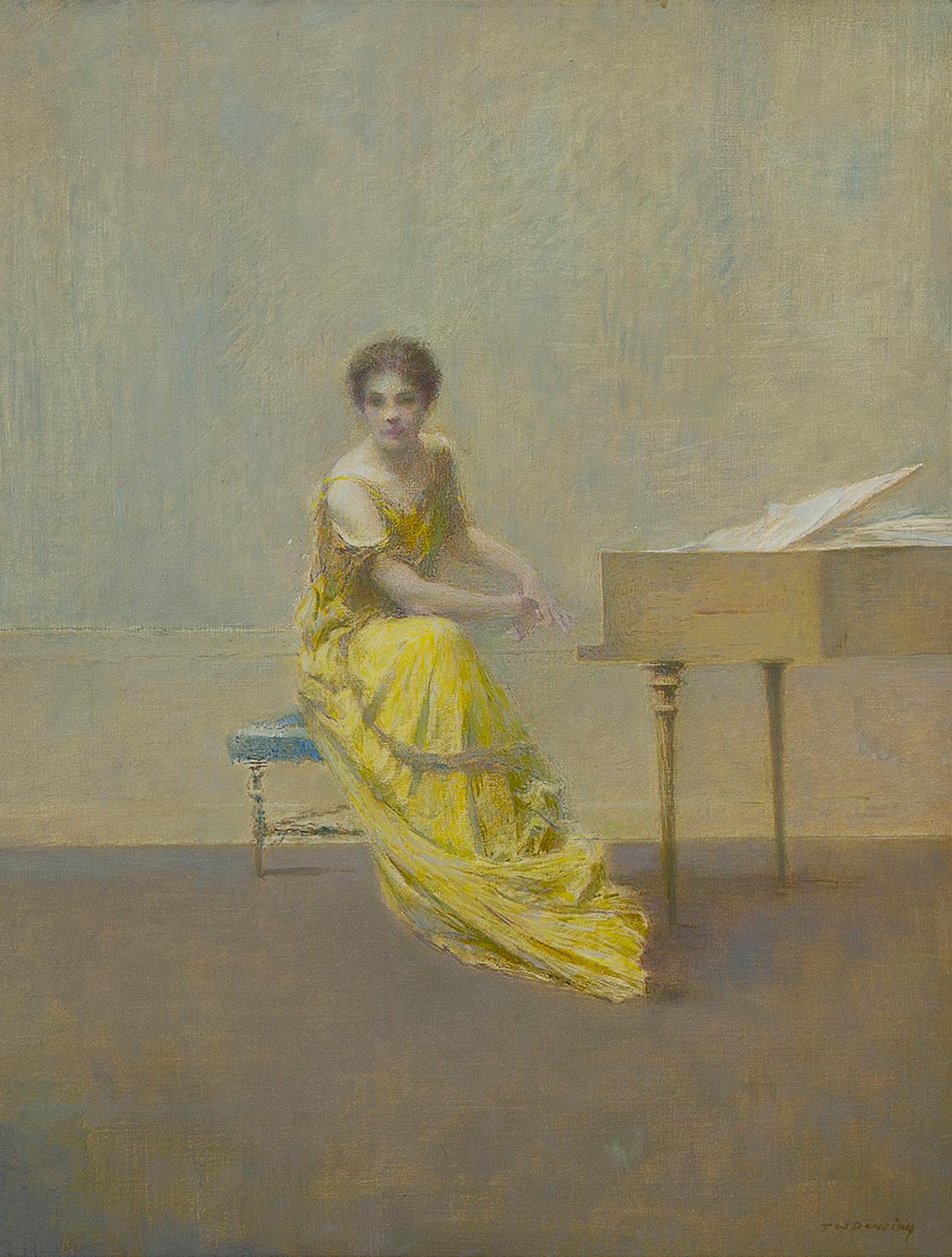
BY PAULINE ARCHAMBAULT, AVP, SENIOR SPECIALIST FINE ART
In the first two decades of the twentieth century, Impressionist practice in America was one of optimism and buoyancy, often showing sitters at leisure in peaceful settings. To create a distinctly American strand of Impressionism, emphasis was placed on the locale, reinforcing an emotional attachment to recognizable regional landscapes, comfortable spaces, and familiar interiors.
Edward Henry Potthast’s A Happy Group and Frederick Childe Hassam’s The Bather both evoke bright, blissful visions of leisure and display a fast, dashing manner, revealing an unquestionable command of impressionist techniques. From 1910 onwards, New York beach scenes became Potthast’s preferred subject matter. In A Happy Group , a rich, bright palette and fluid brushstrokes capture sunlight and movement. Rather than offering social commentary, the painting exudes pure bliss and escapist pleasure. The palette in Hassam’s The Bather is equally vivid, but the brushstroke is choppier, creating a wiry visual pattern that contrasts with the quiet subject of the painting: a nude woman basking on a sunlit coastline. Hassam’s reimagining of the graceful nude, a common classical trope, in the brisk and bright vocabulary of Impressionism suggests that his intention
Article continues next page
OPPOSITE, TO BE OFFERED DECEMBER 8, PHILADELPHIA
Thomas Wilmer Dewing (1851-1938)
The Music Lesson , 1921 $200,000 - 300,000
BELOW, TO BE OFFERED DECEMBER 8, PHILADELPHIA
Childe Hassam (1859-1935)
The Bather (The Bather I) , 1904 $150,000 - 250,000

is less documentary than allegorical, transposing an idealized notion of beauty onto a quaint and familiar New England landscape.
The Music Lesson (1921) by Thomas Wilmer Dewing is also replete with a sense of peace and quiet, though conveyed through diffused, subdued tones, rather than bold hues. The setting is an undefined and bare room, save for the piano. The woman sits alone far in the background, detached, seemingly unapproachable. Dewing’s manner, combining precise draftsmanship with fuzzy contours, gives the painting a gauzy look and a disorienting intimation that meaning is elusive. This interpretive deadlock precludes defining the woman in conventional terms. She is clad in a neoclassical dress, reminiscent of archetypal allegories of beauty, but that narrative becomes obsolete as soon as it is formed. The modernity emanating from Dewing’s method—the fraying contours, evanescent light, the off-center arrangement of the composition—instantly disrupts the outmoded vernacular of ideal beauty and of the female body as its locus.
Women have widely been portrayed in fixed traditional gender roles. Yet, this group of portraits, featuring women engaged in leisurely or intellectual activities, quietly and poetically challenges the usual relationship between the viewer and the female sitter. We are prompted to visually connect with her, perfectly still in her place, only to be confounded by her elusiveness; engrossed in a different mental space, she escapes any attempt at defining herself fully and permanently. Dewing’s portrait makes that escape explicit through her frank, direct gaze, daring the viewer to enter the uncluttered room she occupies, without any promise that any narrative will unfold and meaning will be elicited. Freeman’s | Hindman is delighted to feature these compelling works in our upcoming December 8 auction of American Art, alongside canvases by noted Impressionists Richard Miller, John White Alexander, and Irving Wiles. This exceptional group brings forth the vibrancy of American painterly practice at the turn of the twentieth century and showcases the myriad ways in which Impressionists masterfully captured blissful moments of leisure.
INQUIRIES: paulinearchambault@hindmanauctions.com
TO BE OFFERED DECEMBER 8, PHILADELPHIA
Edward Henry Potthast (1857-1927) A Happy Group (On the Sea Shore) $50,000 - 80,000


THIS PAGE AND OPPOSITE (DETAILS), TO BE OFFERED SEPTEMBER 20, CINCINNATI
Engraved Spontoon Pipe Tomahawk, Attributed to Chief Hole-in-the-Day
$15,000 - 25,000
BY DANICA FARNAND, VP, HEAD OF DEPARTMENT, NATIVE AMERICAN ART



Pipe Tomahawks: objects of war and objects of peace. The dualistic nature of this iconic weapon has captured the imaginations of collectors for centuries.
This example, to be offered on September 20th in our Native American Art auction, is of an early and classic form. The Spontoon Pipe Tomahawk, with its diamond-shaped blade and curled flanges, is believed to have originated in France and was derived from the military espontoon or half-pike. Pleasing to the Native American peoples, it was traded throughout the 18th century and continued to be manufactured into the 19th century.
Made of hand-forged steel, this spear-shaped blade has been ornamented with rocker-engraved designs of a star on one side and a “bleeding heart” on the opposite. It is thought that the star is representative of the Upper World, while the bleeding heart would have Christian symbolism. Both are illustrative of higher powers. Inked on the haft of the tomahawk, is a simple statement of collection history: “Chief Hole in the Day / Chippewa Chief / Braecklein Collection / 3850 E. 60 th Terrace.”
Chief Hole in the Day, the Younger (ca. 1825–1868) was a complicated individual. Self-proclaimed as the “first chief” of all Minnesota Ojibwe, he worked with the US government in various treaty and land negotiations, which placed his family in favorable positions and resulted in resentment among the Bands. During the 1862 Dakota War, also known as the Sioux Uprising, Hole in the Day sent a rallying cry to the Ojibwe people to join the Dakota in their fight against the White encroachment of Sioux lands. Fears of an alliance between the Ojibwe and Dakota caused the government to reissue payments of reneged but bespoke agreements, resulting in Hole in the Day again siding with the Government and once more sparking frustration among the Ojibwe Bands.
He continued with his diplomatic visits to Washington and in 1867, White Earth reservation was established, creating the largest reservation in Minnesota. In the negotiations, it was added that before anyone moves, the Government must build housing for all families. Hole in the Day also requested that traders of mixed blood be excluded from living on White Earth as they often took advantage of the people.
The traders, not happy about this decision, plotted Hole in the Day's assassination. On June 27th, 1868, while he was en route to Washington D.C., a group from the Leech Lake Ojibwe Band, hired by White and
mixed-blood traders, attacked and killed the chief. It is no wonder why an object that belonged to a man with such a storied life would be of interest to a collector. John George Braecklein (1865-1958), who hand inked the collection history on this tomahawk, was an avid collector and student of historic and prehistoric Native American material culture. In his professional life, he had a successful career as an architect and was responsible for designing Kansas City’s first skyscraper, the tallest building in the city in 1897. In 1890, he left for Chicago and assisted with the design of several of the World’s Fair buildings, the Chicago Athletic Club, and the Newberry Library. Braecklein’s attention to detail was not left on his drafting table; the objects and artifacts of his collection are known by his cataloging inscriptions.
INQUIRIES: danicafarnand@hindmanauctions.com
VIEWING: 17 - 19 September 5030 Oaklawn Drive, Cincinnati, OH



This September Lyon & Turnbull will offer a selection of paintings by leading Scottish and European artists on behalf of the Paisley Art Institute as a major part of an ongoing effort to secure the future of the organization.
A Taste for Art : Selected Works from the Paisley Art Institute Collection , featuring work from the Glasgow Boys and the Scottish Colourists, is expected to fetch between £1m and £1.5m. The team at the Paisley Art Institute has carefully selected this group from their extensive collection of 450 artworks.
Paisley Art Institute has been at the forefront of promoting and supporting Scottish artists’ work since 1876. It is a lively artists collective run by artists and art lovers which continues to be focused on its original aims including its annual largescale exhibition for contemporary artists, now in its 135th year.
Now the artist-led body is selling around 100 paintings from the collection with Lyon & Turnbull in order to secure its future.
There are four major paintings by turn-ofthe-century art titan, Sir John Lavery, in the sale. The Belfast-born artist lived and worked in Paisley in the 1880s, with his first solo show being held in Paisley Town Hall in November 1886. Known today as a leading member of the group The Glasgow Boys, his considerable achievements are currently being celebrated by a landmark exhibition at the National Galleries of Scotland.
In the late 19th and early 20th century, the town of Paisley, near Glasgow, was a center of artistic excellence thanks to its prosperous textile trade which relied on trained artists and designers. At one point it even had its own art school, Paisley Government School of Art Design.
Several of The Glasgow Boys lived and worked in Paisley, attending its art school.
The Paisley Art Institute, founded in 1876, was at the forefront of developments in both British and European modern art. As a result, the Institute built up a unique art collection.
The Glasgow Boys’ pioneering brand of social-realism is represented in this sale by two masterpieces by Sir James Guthrie, while three stand-out landscapes by Edward Arthur Walton are prime examples of the group’s approach to capturing scenes and people from everyday life.
There is also a portrait by Scottish Colourist, Francis Campbell Boileau Cadell, showing the artist at his most stylish and self-assured.
Significant compositions up for auction by George Henry and Edward Atkinson Hornel apply the latest Modernist techniques to depicting the Scotland of the late 19th and early 20th century.
A Taste for Art: Selected Works from The Paisley Art Institute Collection
Lyon & Turnbull: Edinburgh, 26 September 2024 Nick Curnow nick.curnow@lyonandturnbull.com

TO BE OFFERED SEPTEMBER 26, LYON & TURNBULL, EDINBURGH
Campbell Boileau Cadell R.S.A., R.S.W (Scottish 1883-1937) Pink and Gold
Signed, oil on canvas
£150,000 - 250,000
TO BE OFFERED SEPTEMBER 26, LYON & TURNBULL, EDINBURGH

and dated 1889, oil on canvas
£400,000 - 600,000

Josephine Baker (1906-1975) was an American born performer who through international fame became a leading figure in the Civil Rights movement. Born into poverty in Missouri, she overcame substantial hardship to launch a career for herself as a dancer, comic, and singer in the 1920s.
Her now legendary performances captivated audiences in New York and throughout Europe. By 1923 Baker had appeared as part of the chorus in her first Broadway production, Shuffle Along. However, her career did not really take off until she traveled to France in 1925. Her performances at the Théatre des Champs-Elysees caused a sensation. She became amongst the highest paid performers in Europe. Her career continued to escalate and in 1934 she starred in the French film Zouzou, the first major film with a black woman in the leading role.
Ultimately giving up her US citizenship due to the racial profiling she experienced, she became a French citizen and eventually a decorated war hero following her espionage career in WWII. She was a
tireless campaigner for the NAACP, the Civil Rights movement, as well as for under-privileged children. In 1963 she spoke alongside Dr. Martin Luther King Jr. as part of the March on Washington, the only female speaker at the event.
This seal is a highly personal item, gifted in the 1920s from an admirer. Her name written in bold Art Deco styling above a sumptuous guilloche enameled handle. Formerly in the collection of a personal friend of Mrs. Baker and last sold at auction in the late 1990s.
London Jewellery
Lyon & Turnbull: London, 23 October 2024
Sarah Duncan GG sarah.duncan@lyonandturnbull.com
A personalized enamel seal, early 20th century from the personal collection of Josephine Baker, circa 1910-1930
£3,000 - 5,000

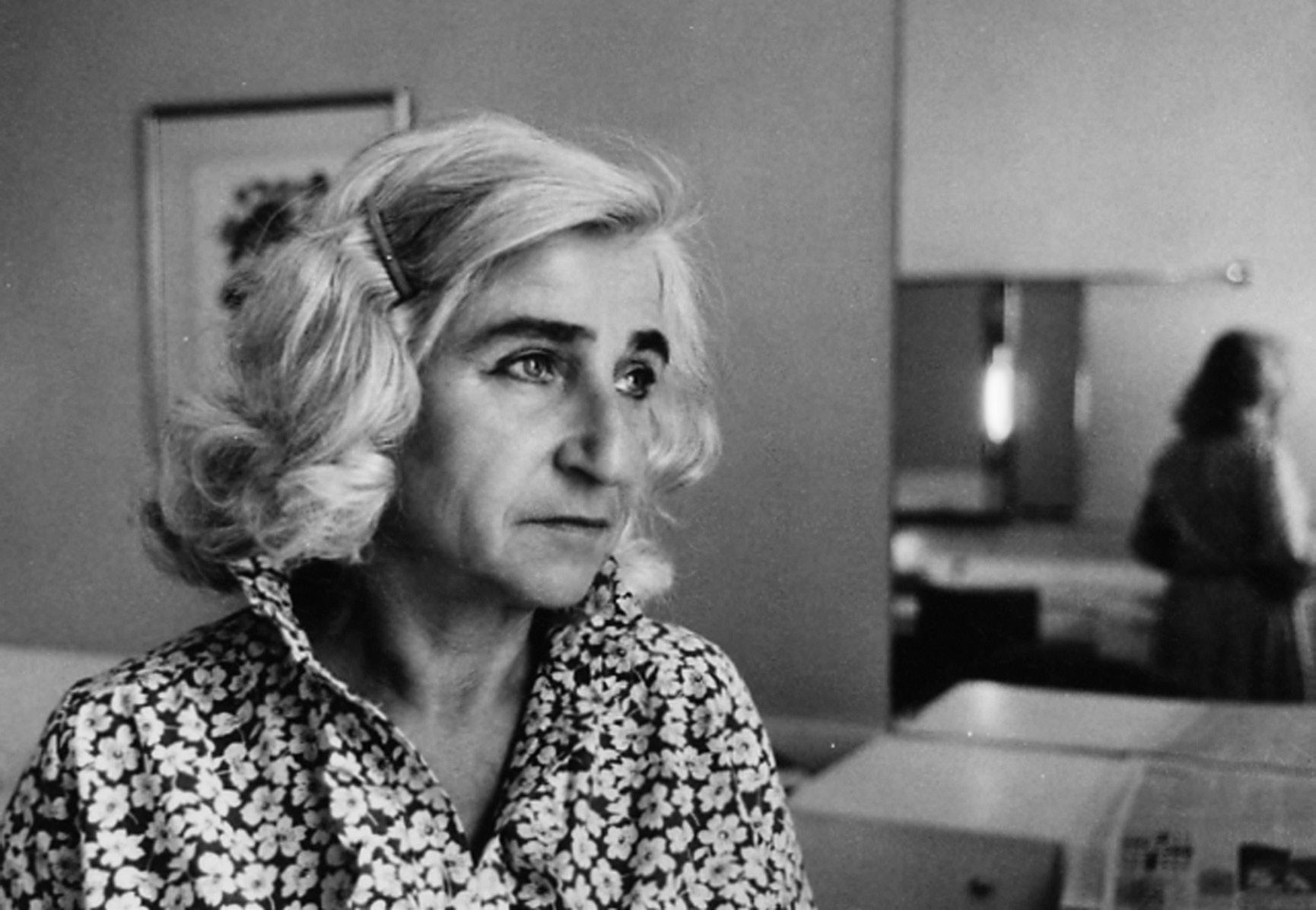
Works from the collection of influential British photographer Dorothy Bohm will be offered by Lyon & Turnbull across a series of sales this autumn and winter, starting with MODERN MADE in London on November 1.
The collection will feature works by Bohm herself— black and white photographs from the 1950s and 60s and color images from the 80s and 90s—alongside photographs by some of the leading names of 20th century photography, such as Berenice Abbot, André Kertész, Manuel Alvarez Bravo, Lee Miller, and Ida Kar, many of whom were close friends and colleagues.
Offered alongside the photographs will be an eclectic selection of Modern British art—including a landscape by Ivon Hitchens ( Blue River, 1932, estimate £30,00050,000)—as well as antique furniture and Asian art, all of which adorned Bohm’s London apartment.
Dorothy Bohm (1924-2023), who died last year at the age of 98, belonged to the generation of artists and writers who lit up British culture in the post-war period, having arrived on these shores as a 14-yearold refugee in 1939. As a parting gift from Lithuania, her father had handed her his Leica camera saying, “this may be useful to you.”
Her first solo exhibition, People at Peace, took place at the Institute of Contemporary Arts in London in 1969, while 1970 saw the publication of the first of many books, A World Observed . She was also a key figure in the founding of The Photographer’s Gallery in London in 1971—Britain’s first public gallery dedicated to the medium—and it was in this capacity that she came to know many of the big names in international photography, whose work we can see in her collection.
The photographs on offer include Erwin Blumenfeld’s iconic image of the Louvre’s Victory of Samothrace (as used on the cover of Vogue magazine in Christmas 1945) and Manuel Alvarez Bravo’s beautiful 1933 study of a girl in traditional Mexican costume, Daughter of the Dancers . Some of Bohm’s biggest influences were women. As a pioneering American photographer who worked for both Fortune and Time magazines, Berenice Abbot (1898-1991), was a particular inspiration. Her image Parabolic Mirrors Reflecting A Girl’s Eye, 1958-1961, is one of a set of photographs illustrating the principles of optics.
MODERN MADE : Modern, Post-War & Contemporary Art, Design, Craft and Studio Ceramics
Lyon & Turnbull: London, 31 October - 01 November 2024
Simon Hucker | simon.hucker@lyonandturnbull.com
Philip Smith | philip.smith@lyonandturnbull.com


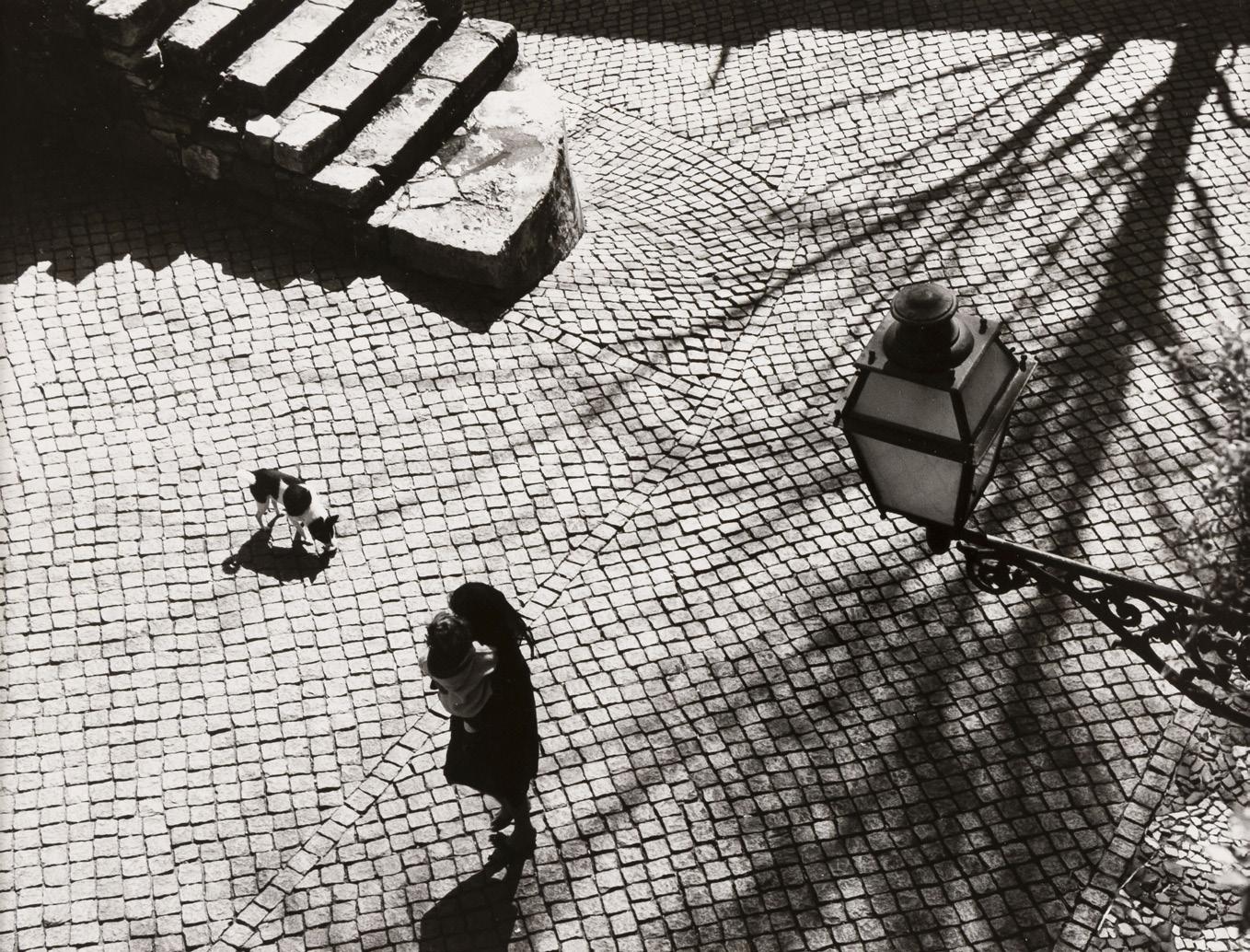
OPPOSITE
Dorothy Bohm by André Kertész, Savoy Hotel, London, 1979

THIS PAGE, CLOCKWISE FROM TOP, TO BE OFFERED NOVEMBER 1, LYON & TURNBULL
Erwin Blumenfeld (German / American 1897-1969)
Victory of Samothrace, Louvre, Paris , c.1930s
£4,000 - 6,000
Manuel Alvarez Bravo (Mexican, 1902-2002)
The Daughter of the Dancers , 1933
£2,000 - 3,000
Dorothy Bohm (British 1924-2023)
Approach to the castle, Lisbon , 1963
£800 - 1,200
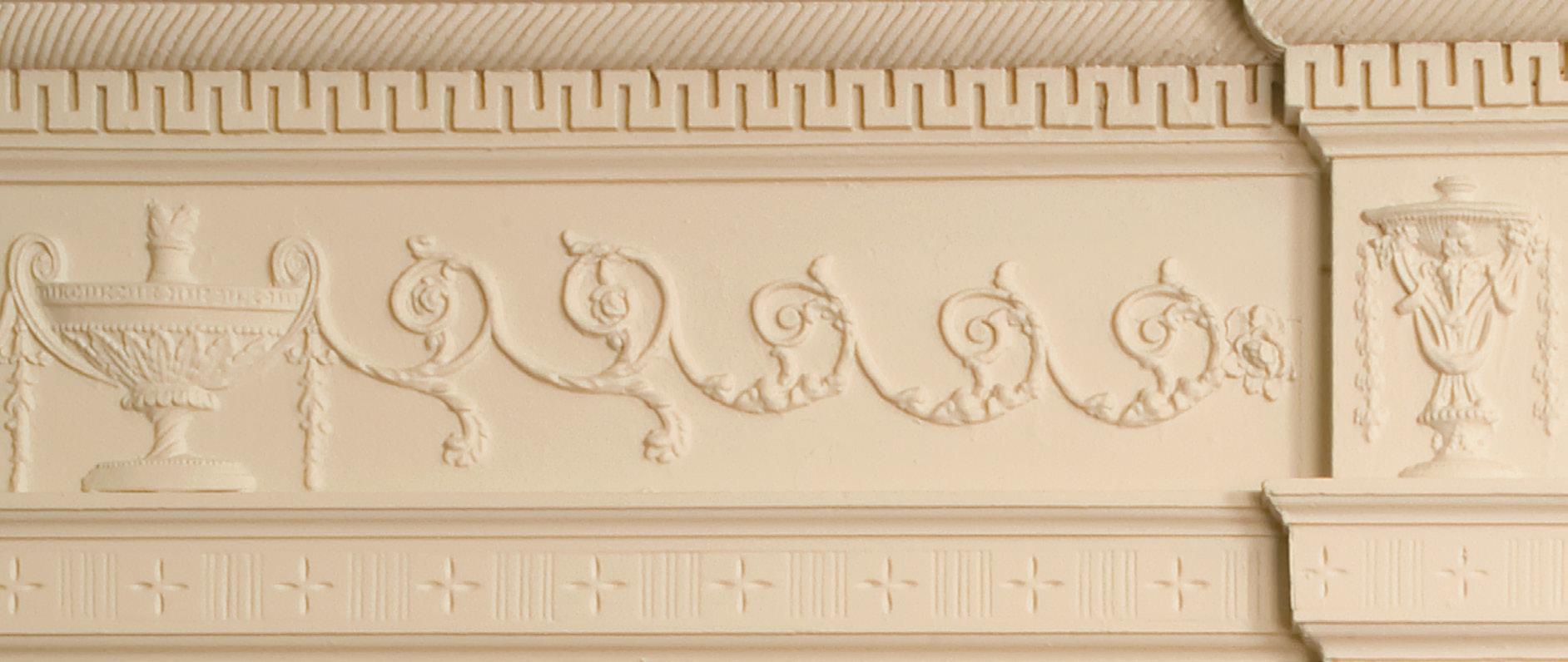
November 15–17, 2024 | Chase Center on the Riverfront, Wilmington, Delaware
One of the most acclaimed antiques shows highlighting the best of Americana for 61 years! Don’t miss the finest offerings from more than 60 distinguished dealers at this spectacular showcase of art, antiques, and design. 800.448.3883 |
Thursday, November 14 | 5:00–9:00 pm
Celebrate the opening of the show with cocktails, hors d’oeuvres, and exclusive early shopping. Reserve your ticket!
General Admission and Opening Night Party tickets include entry to all three days of the show and to Winterthur during the show dates.
Friday, November 15 11:00 am–6:00 pm
Saturday, November 16 11:00 am–6:00 pm Sunday, November 17 11:00 am–5:00 pm
For more information and to view the Exhibitors list, please visit winterthur.org/DAS.

SATURDAY, NOVEMBER 9, 2024
www.pafa.org/bacchanal or email bacchanal@pafa.org.
AUCTIONS & APPRAISALS SINCE 1805